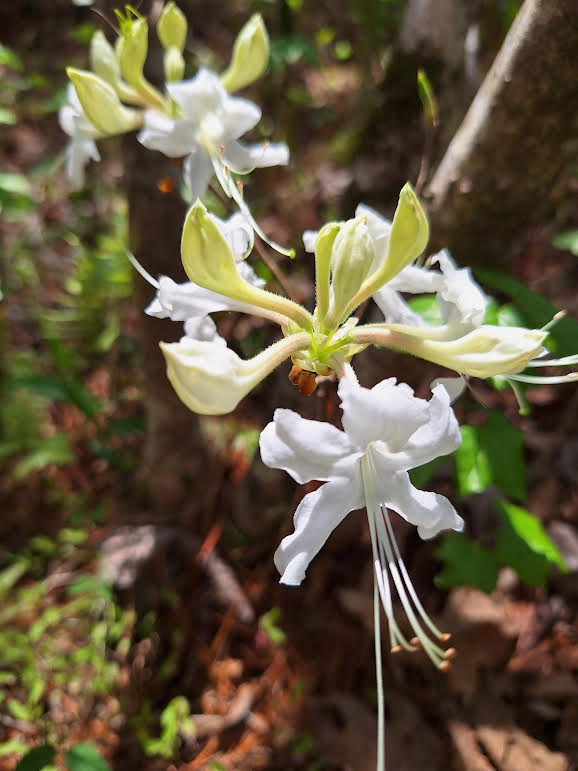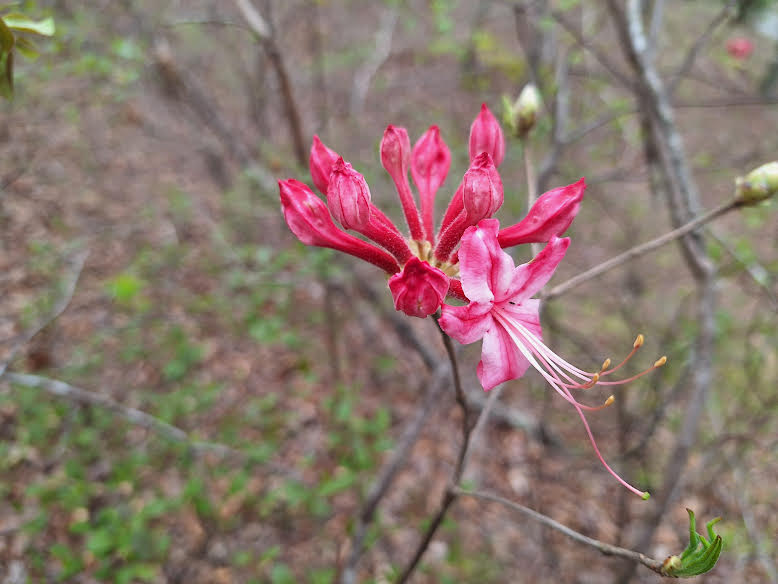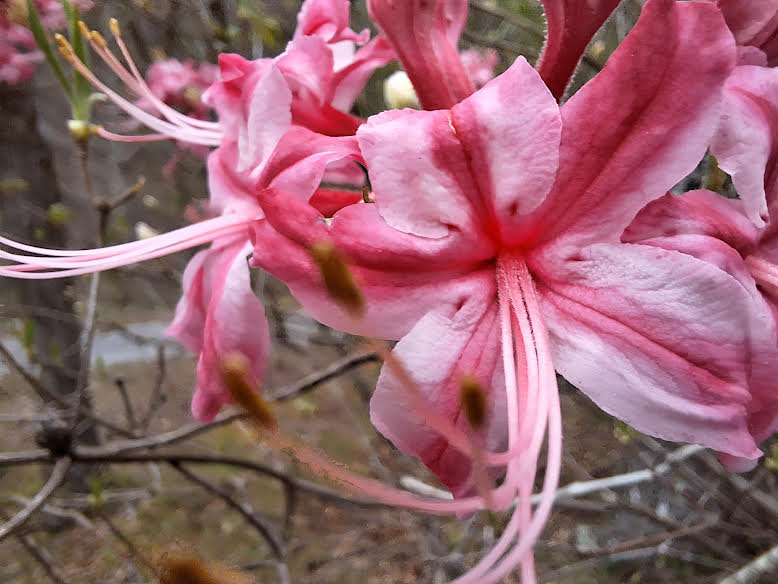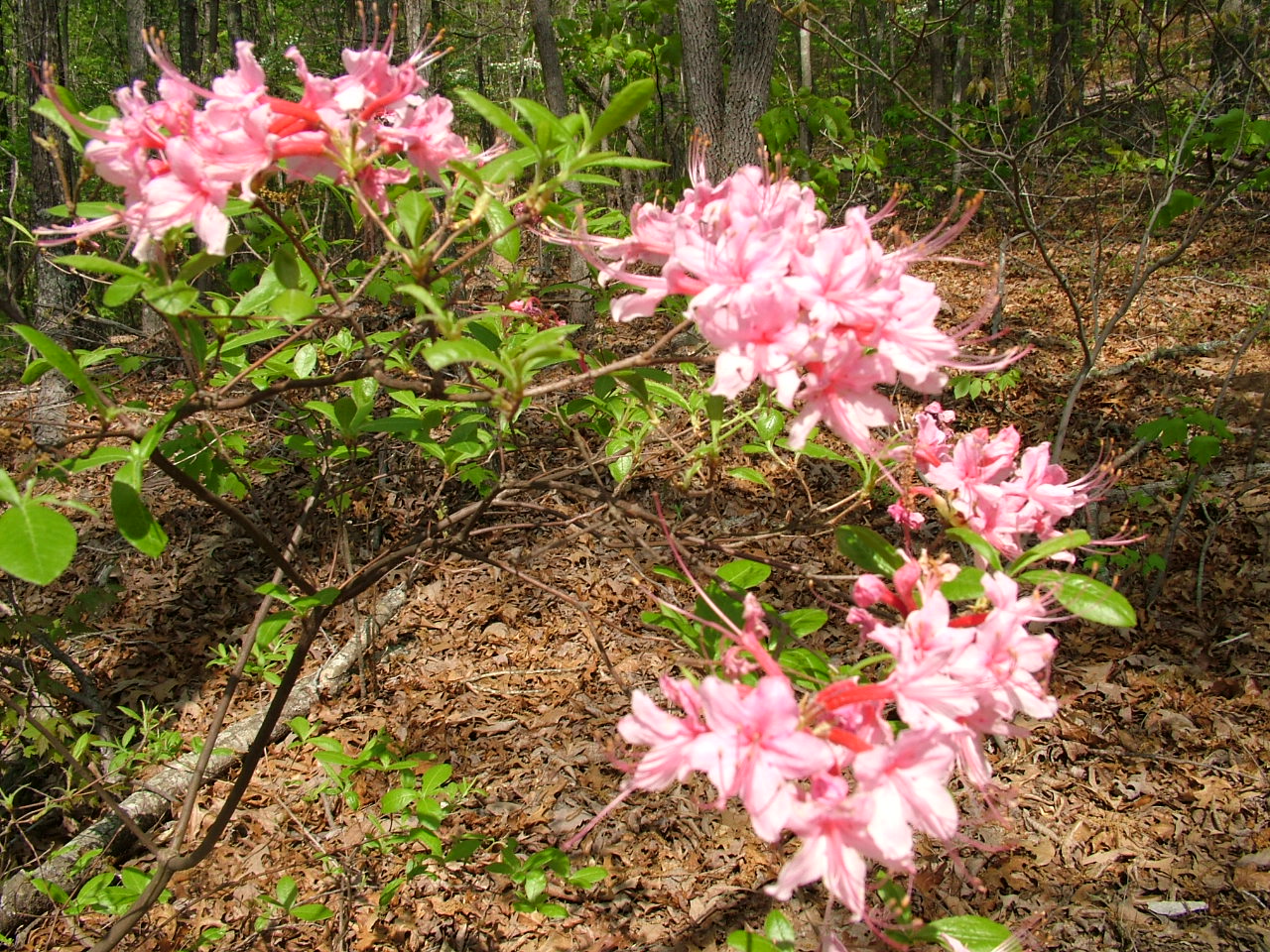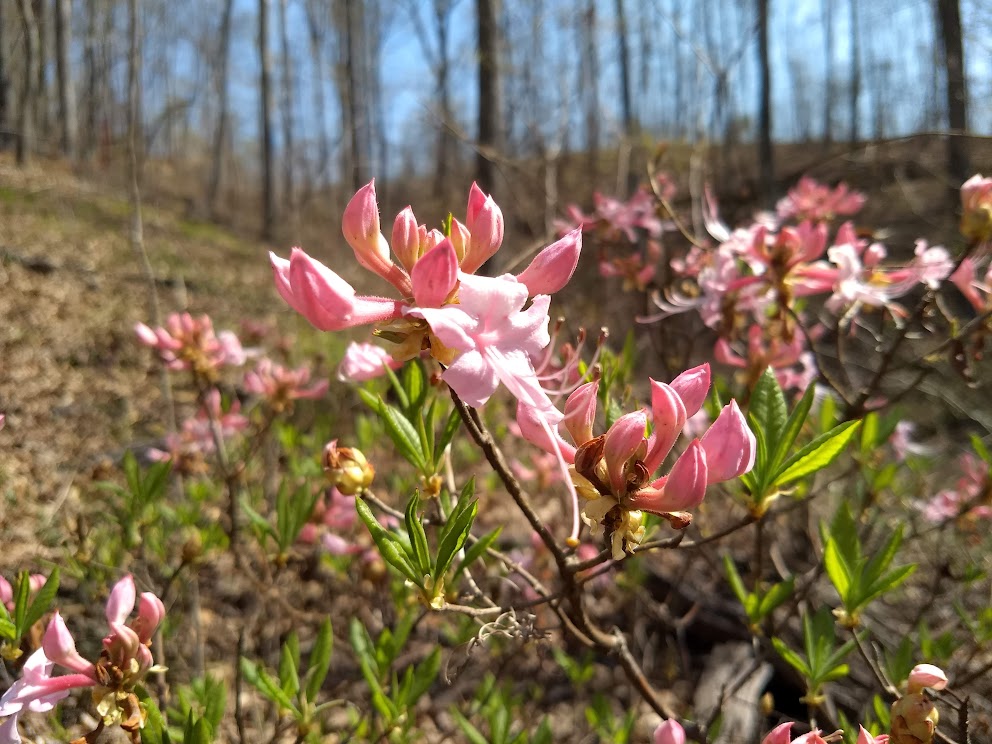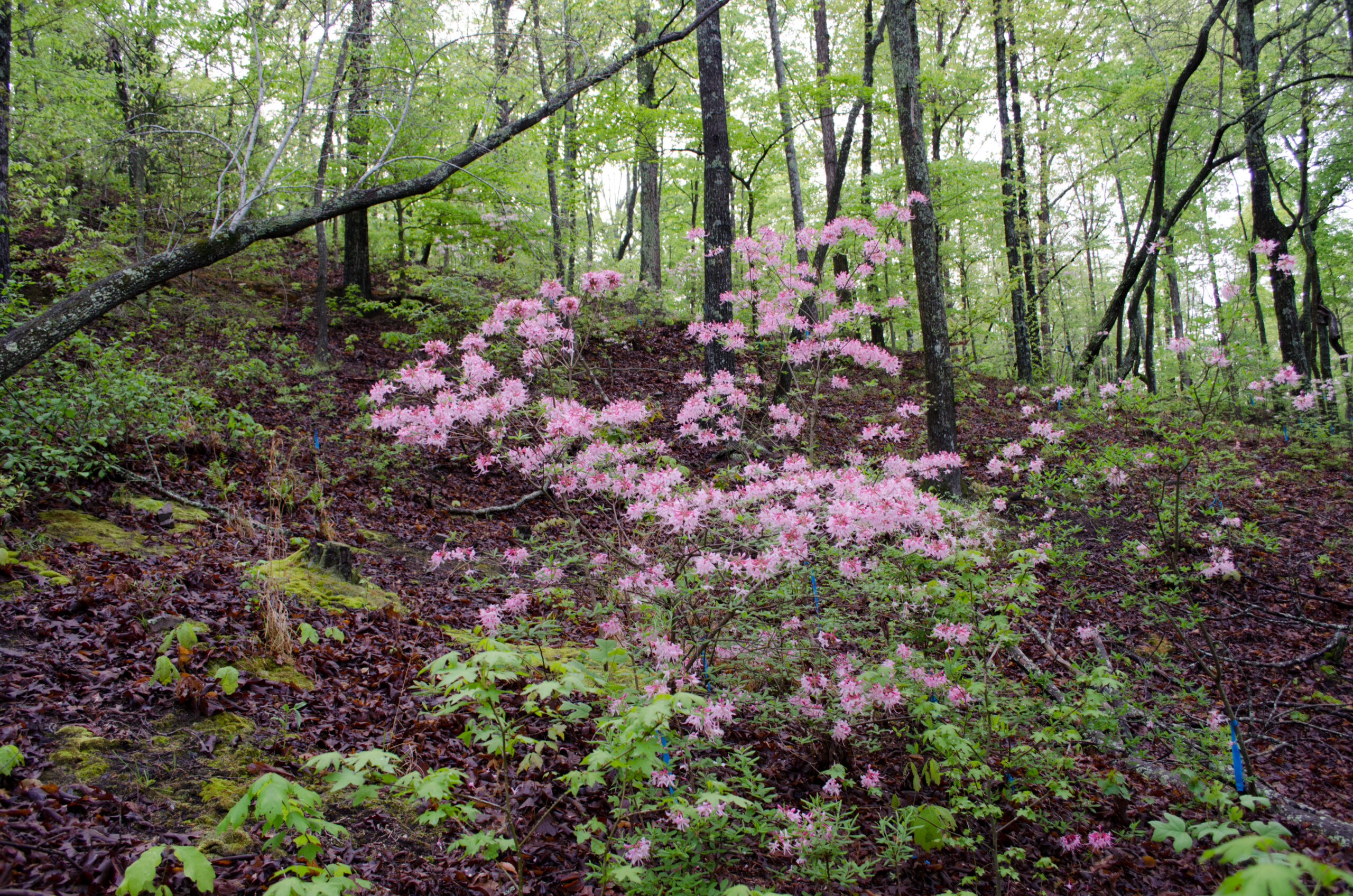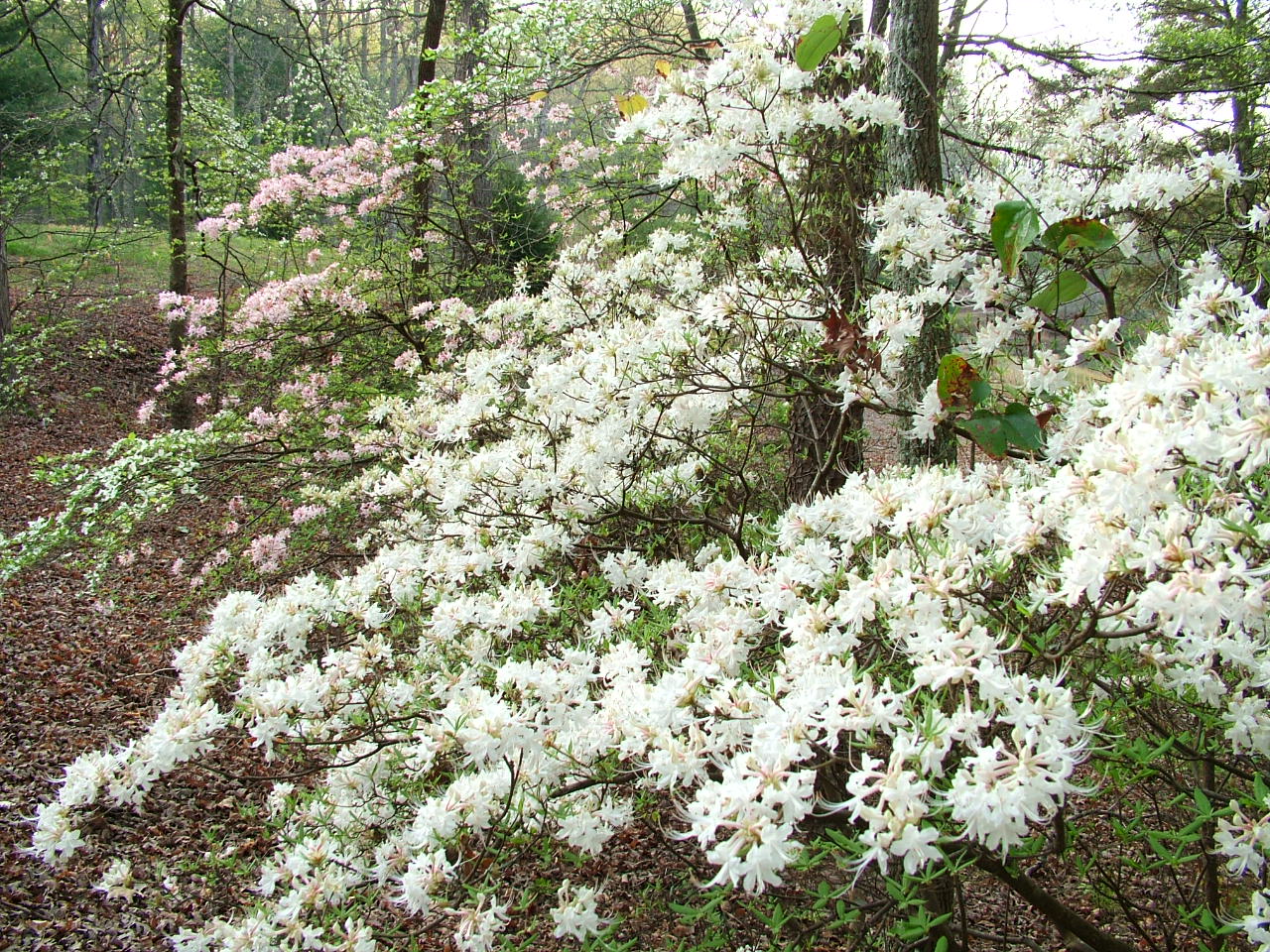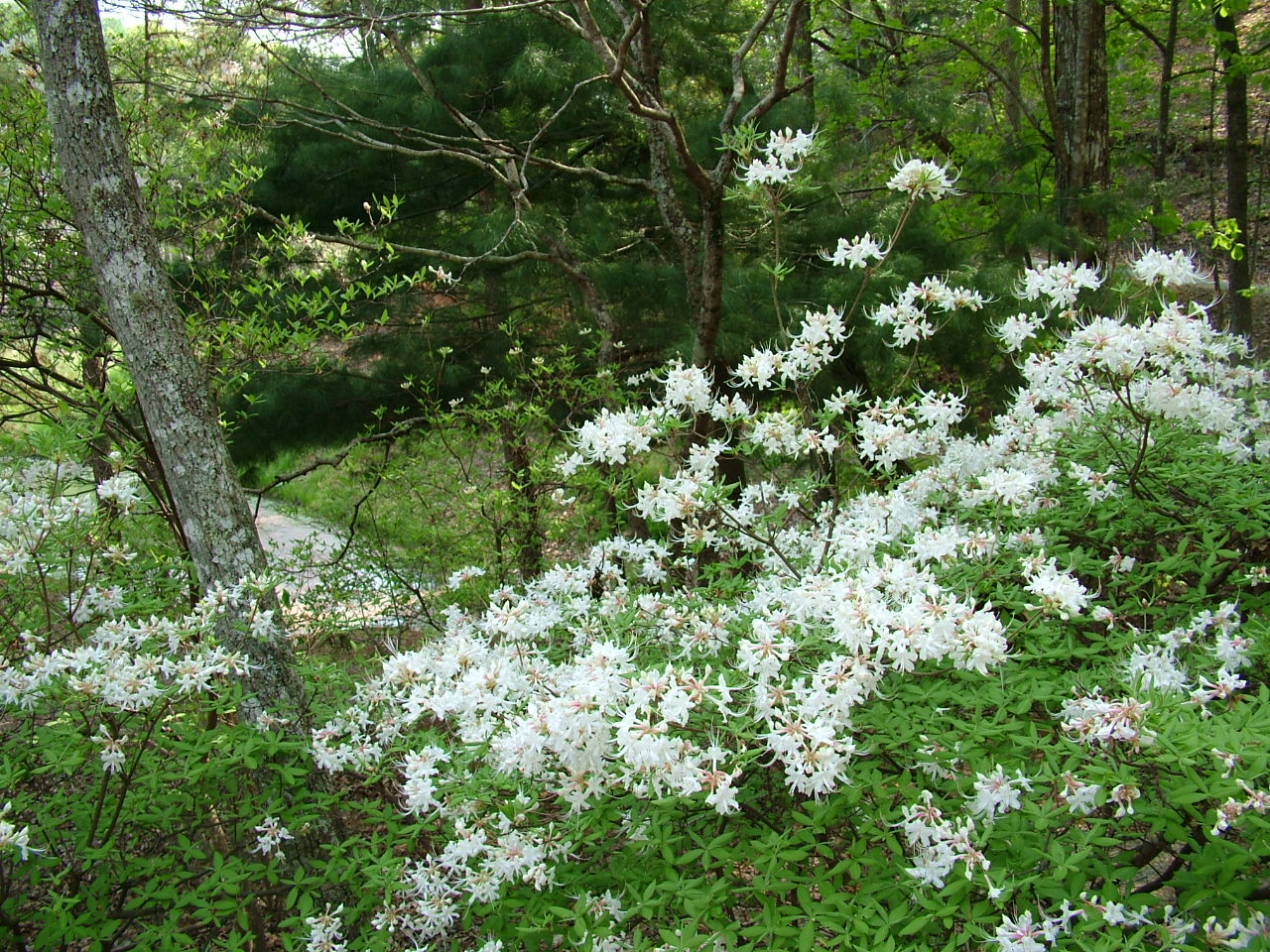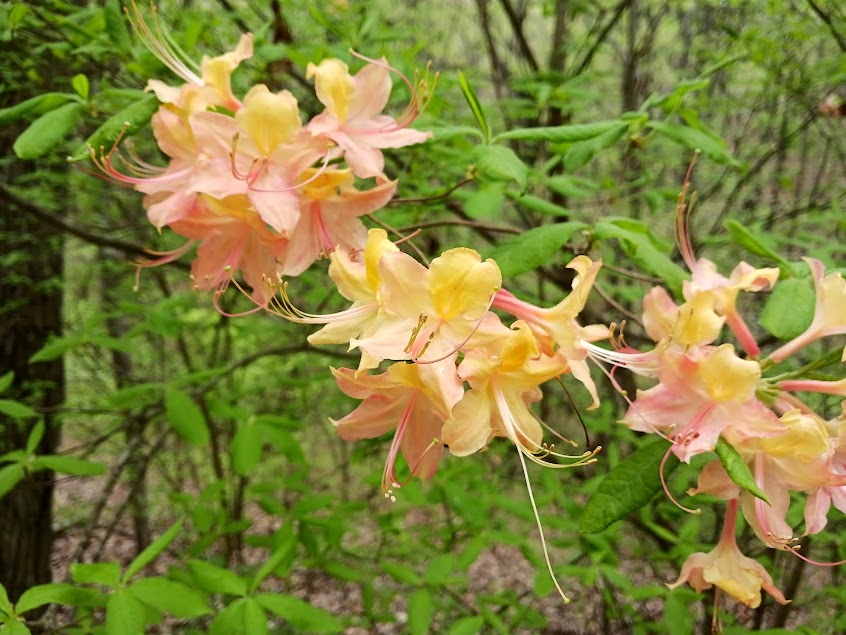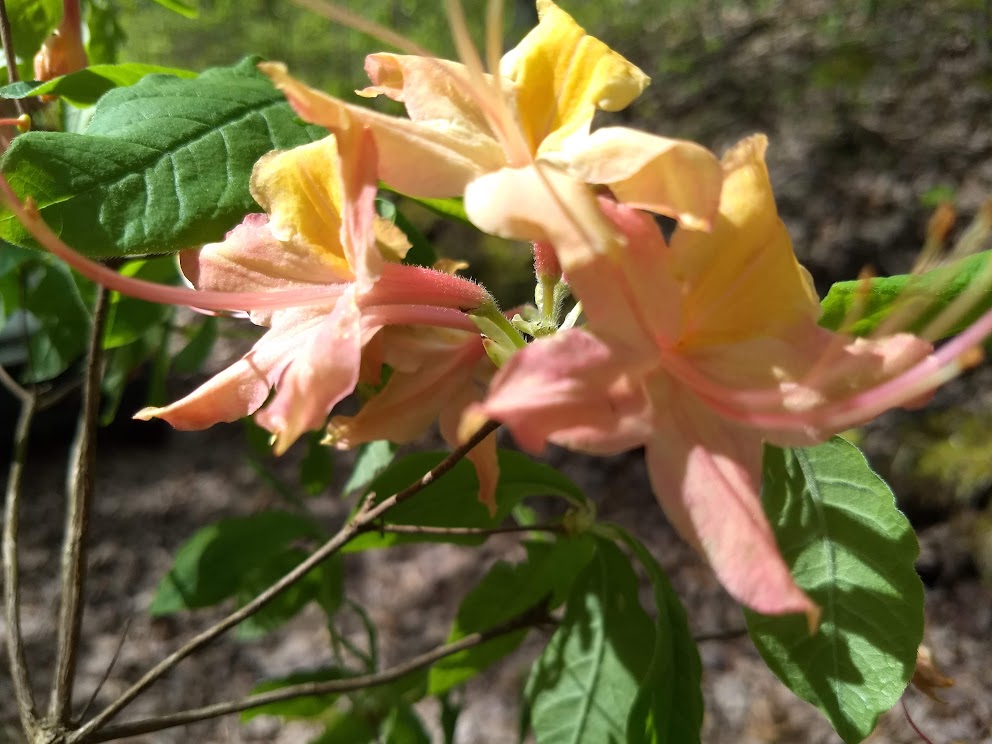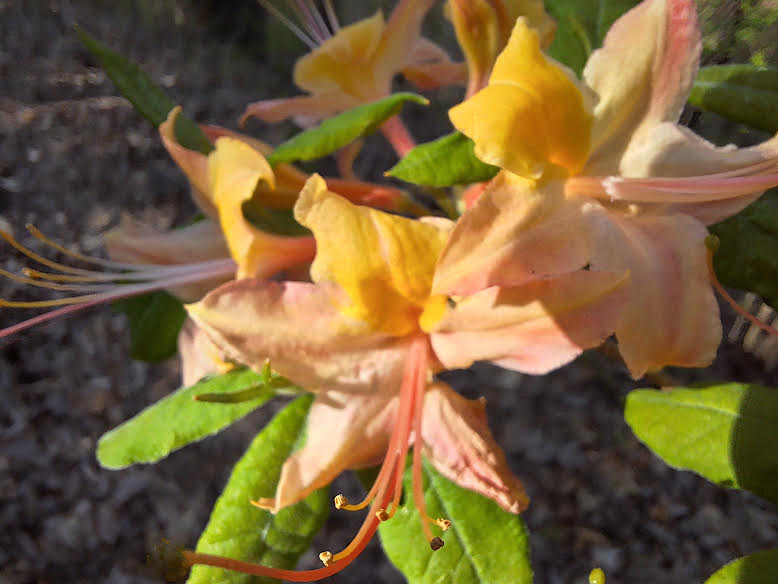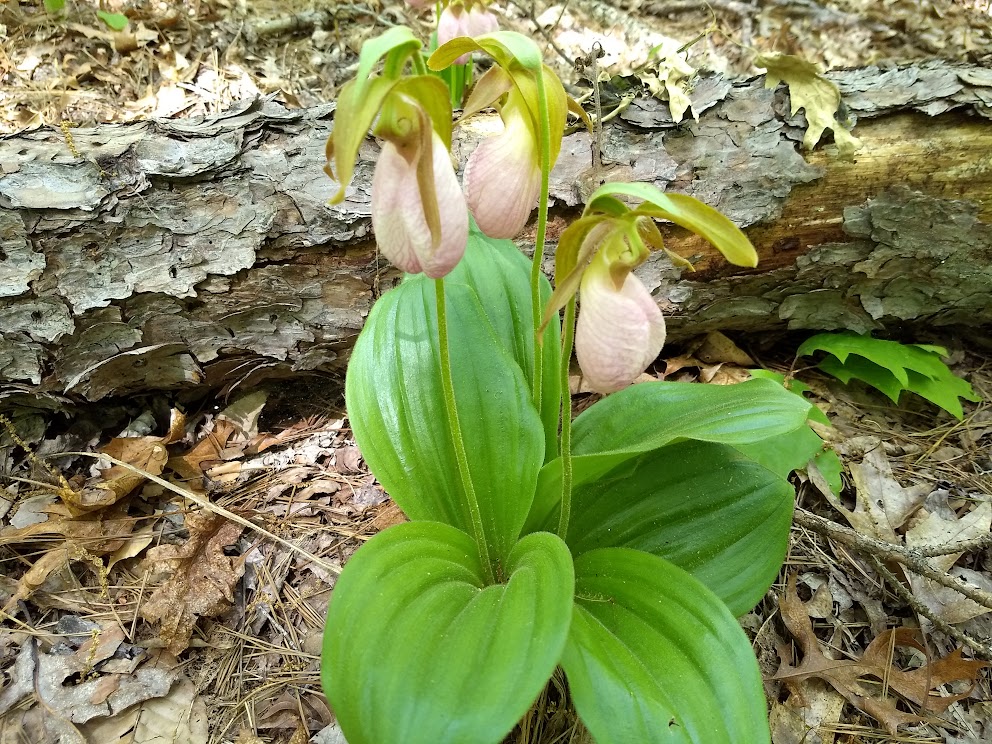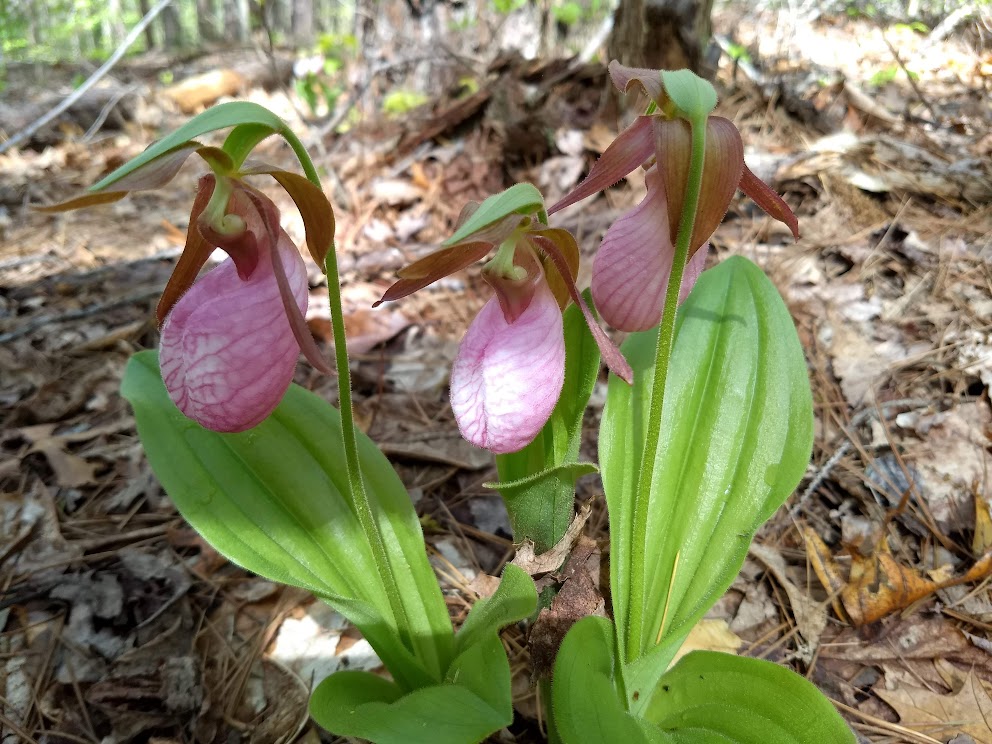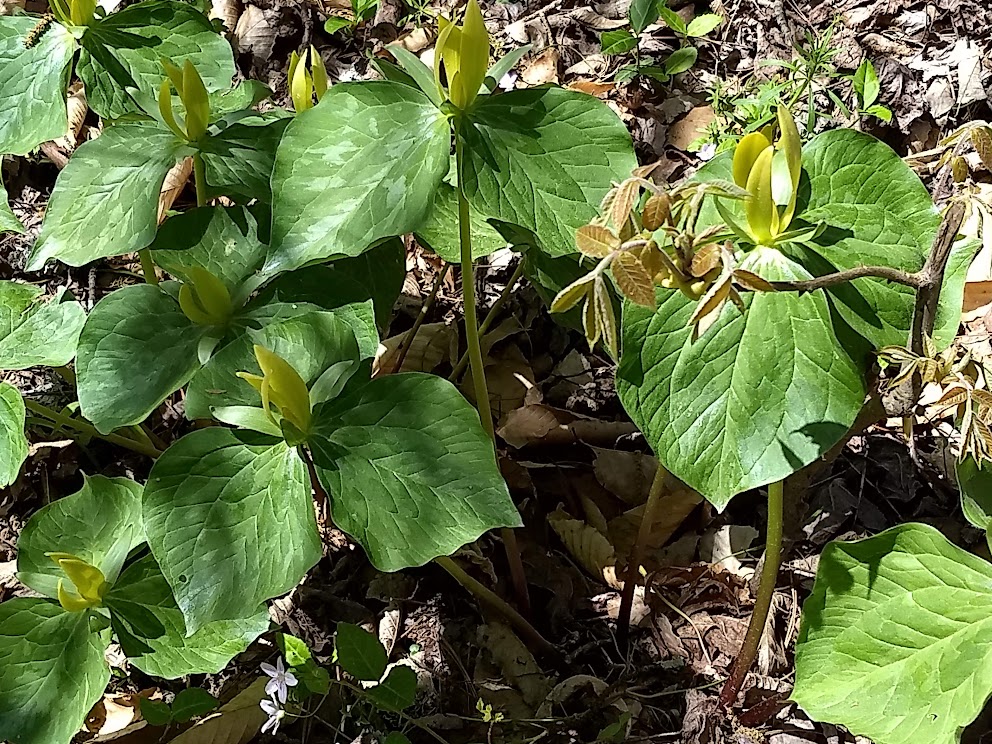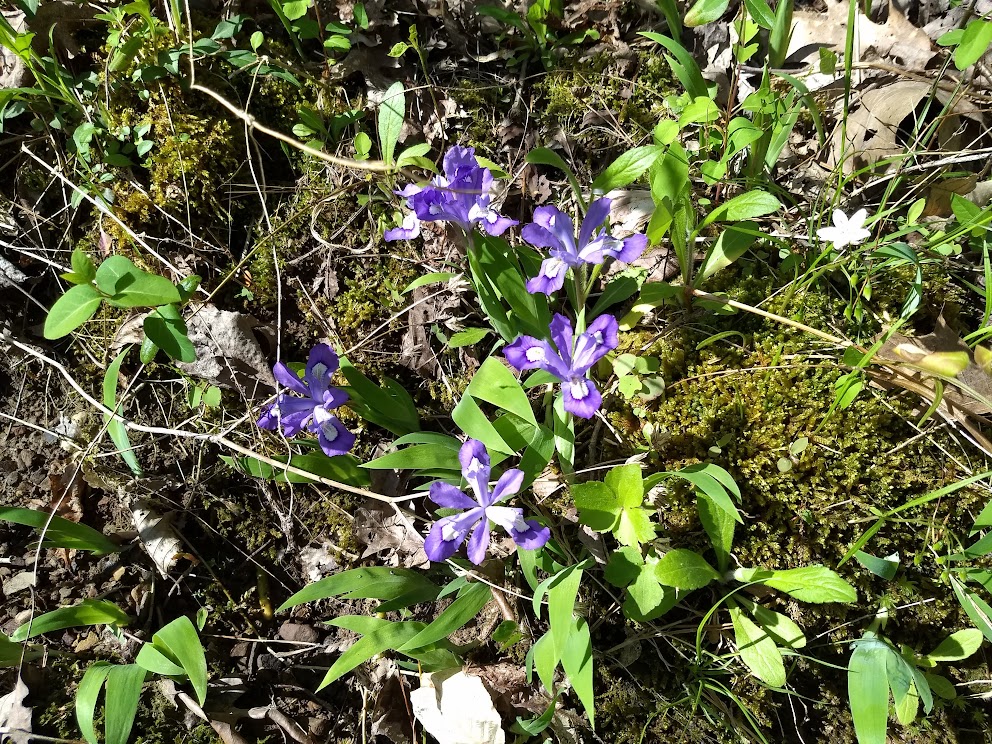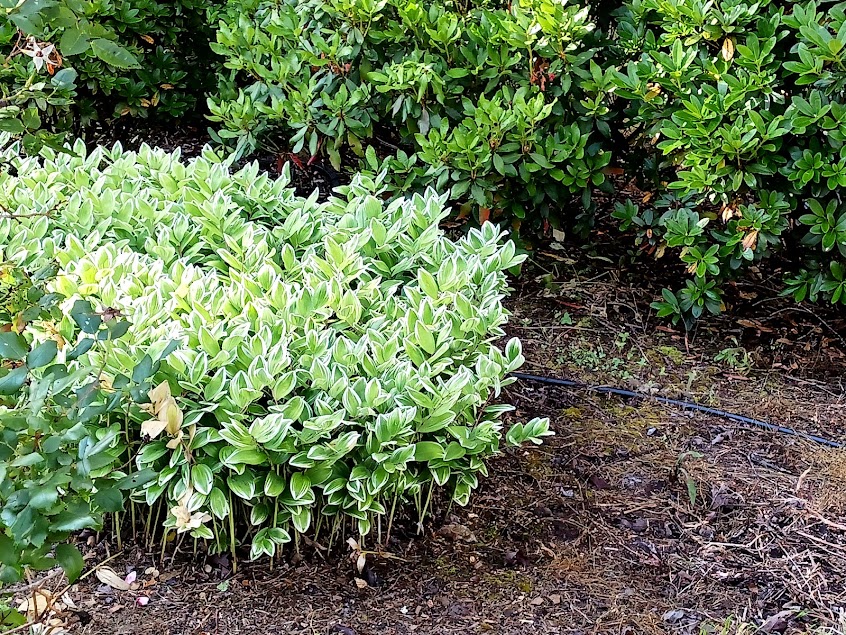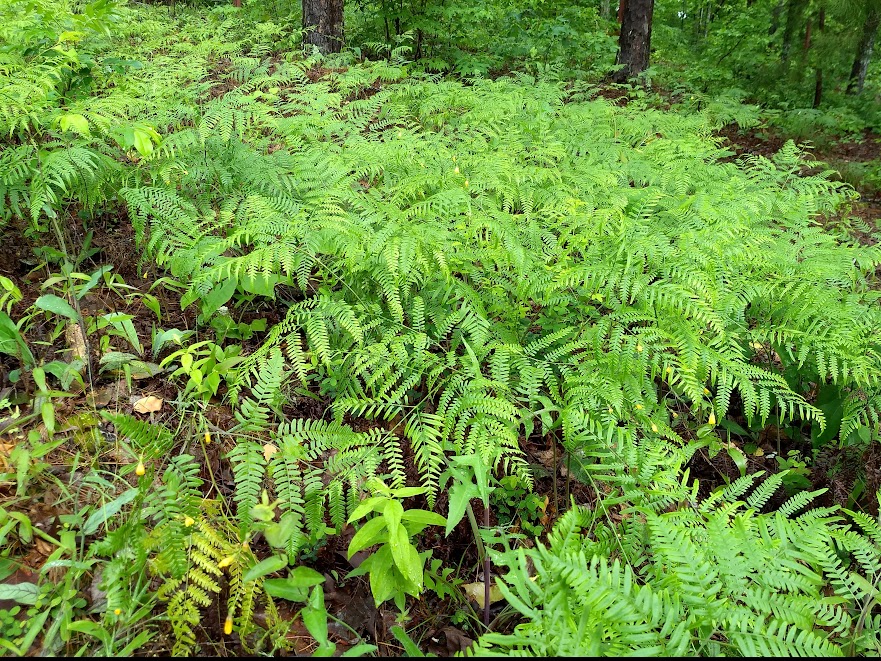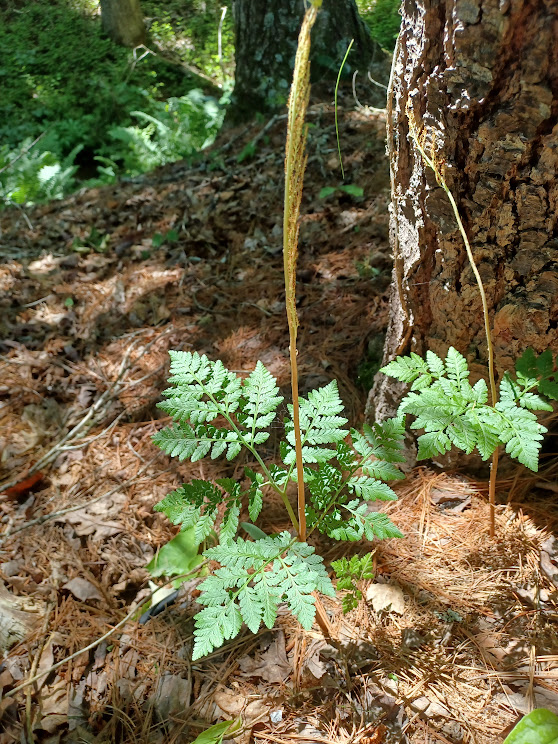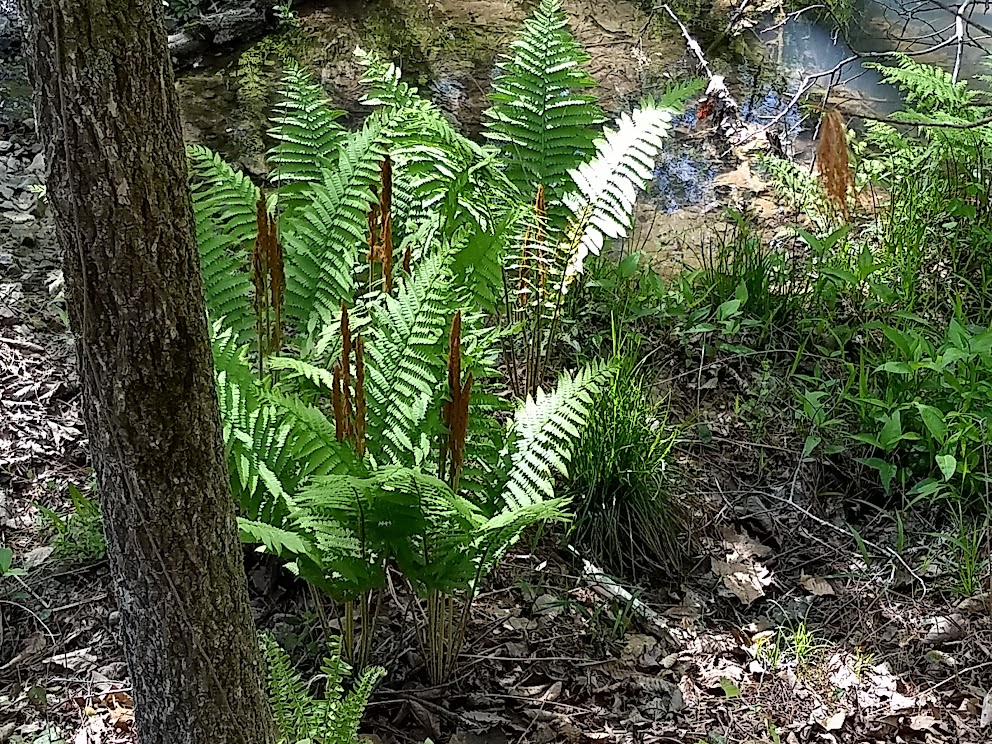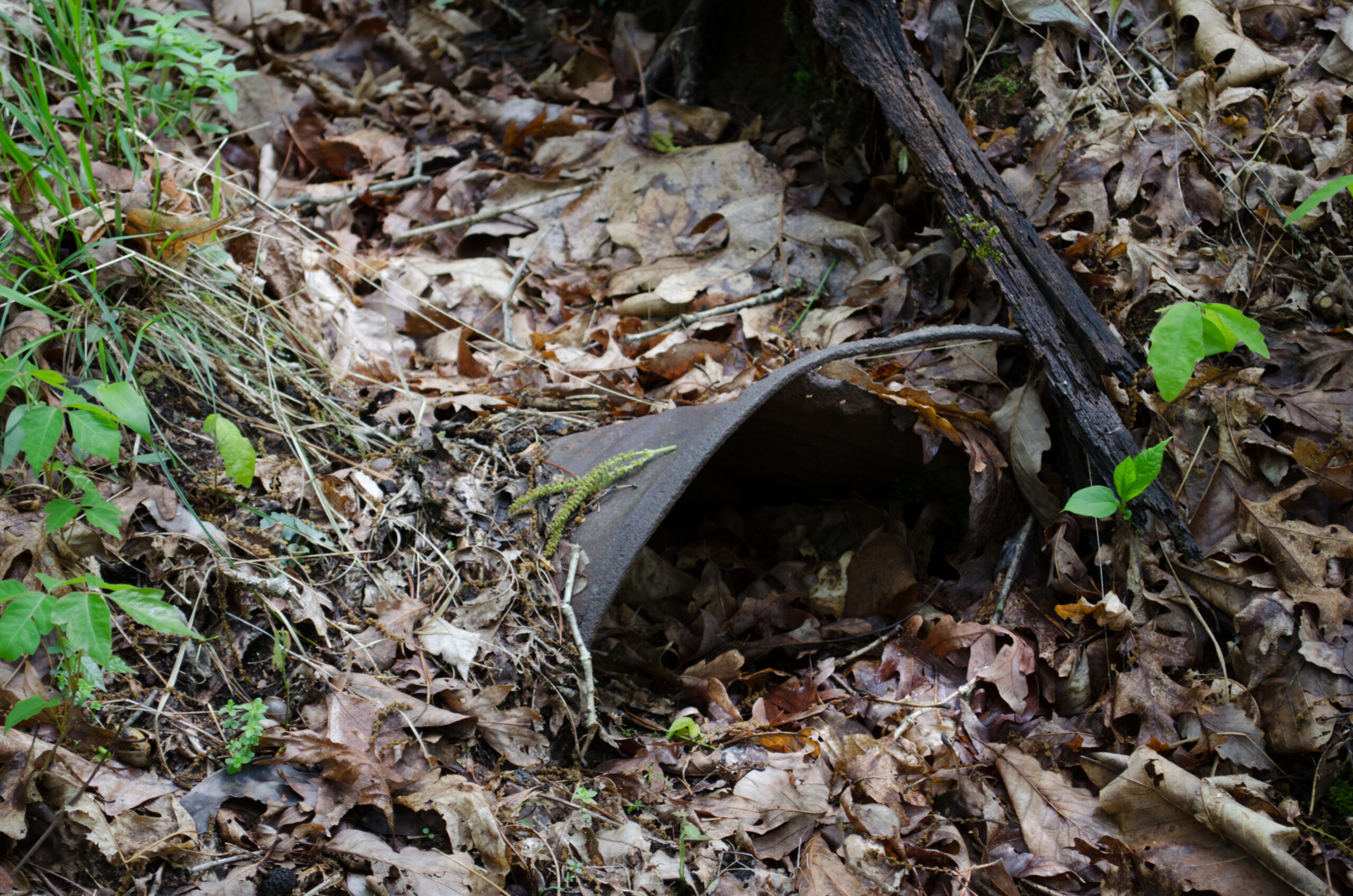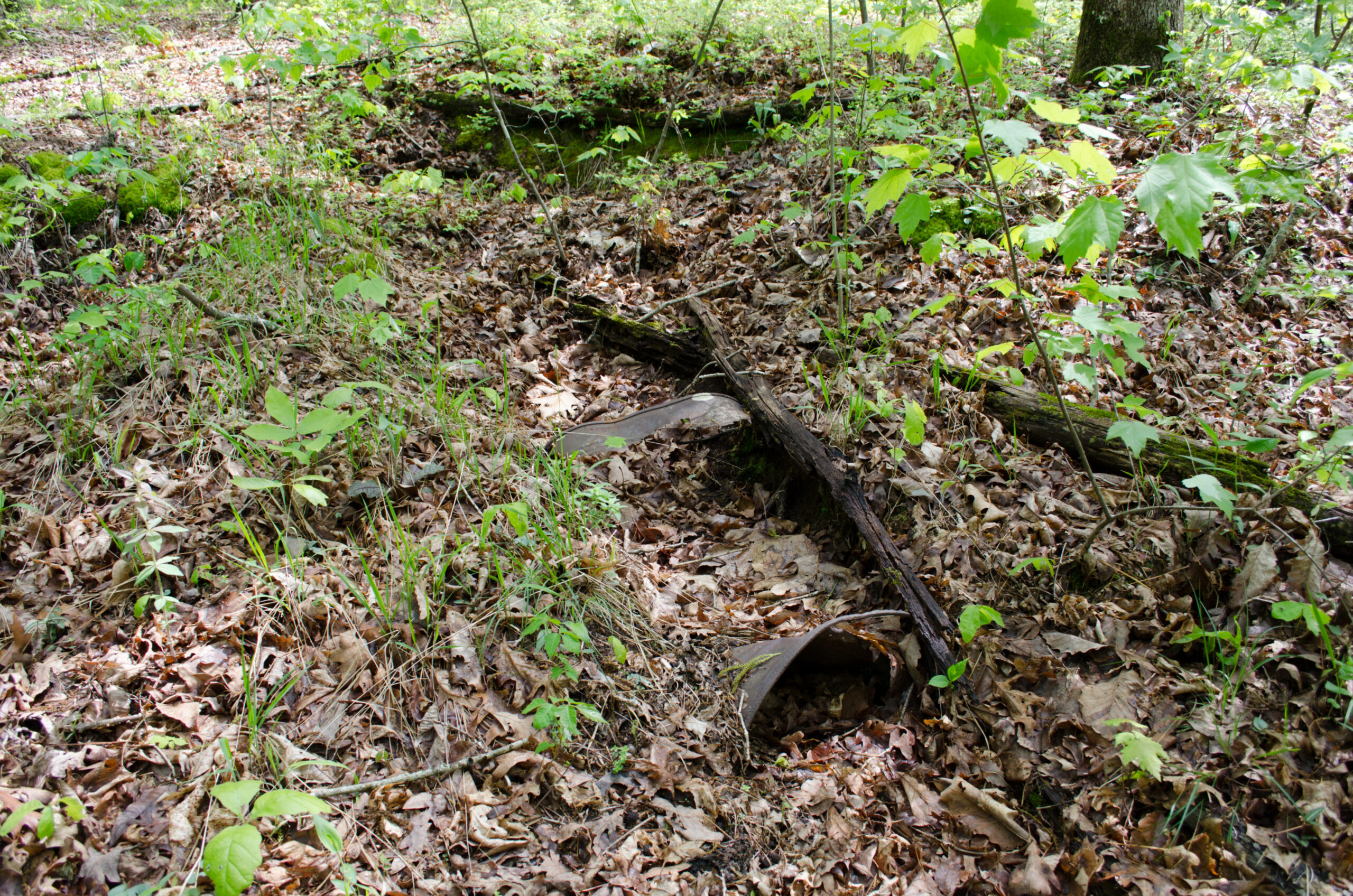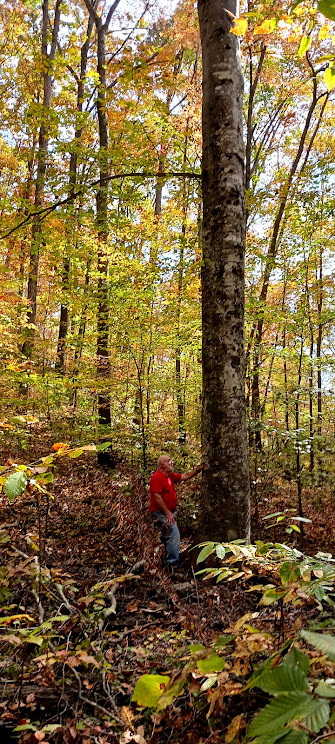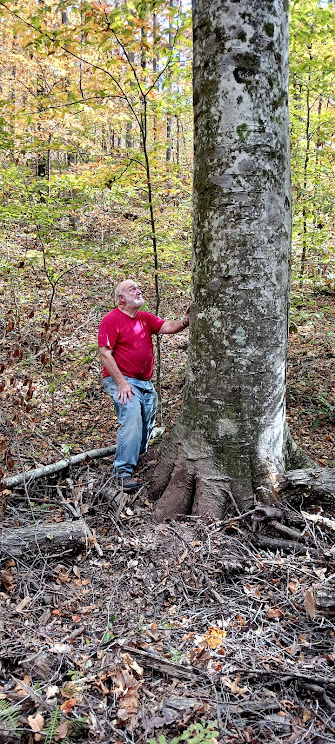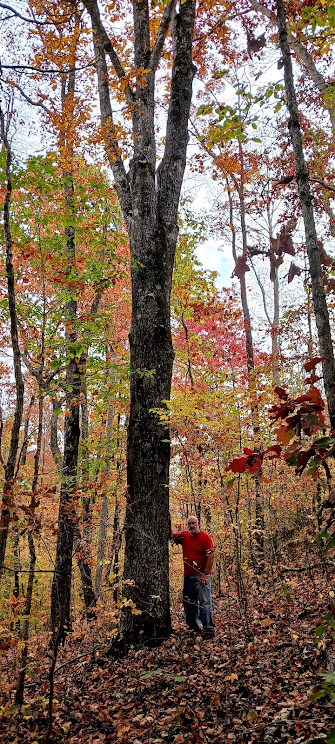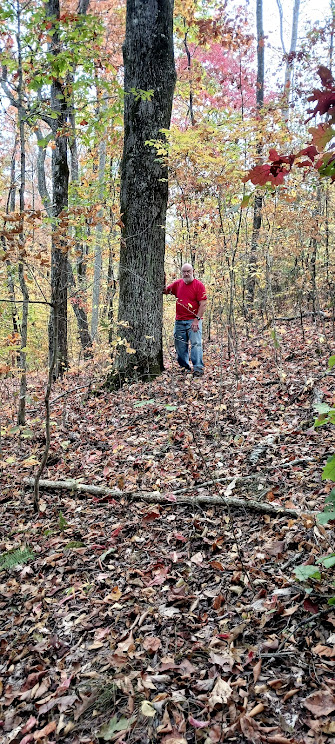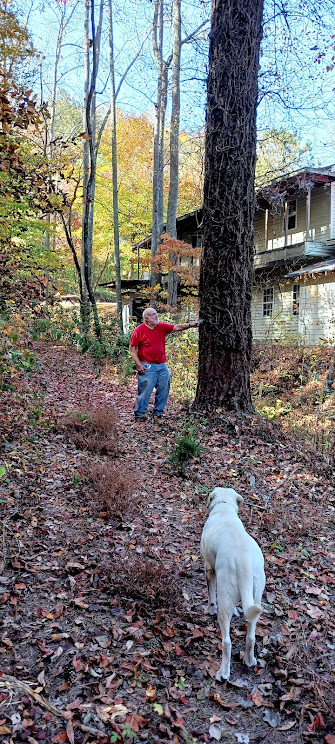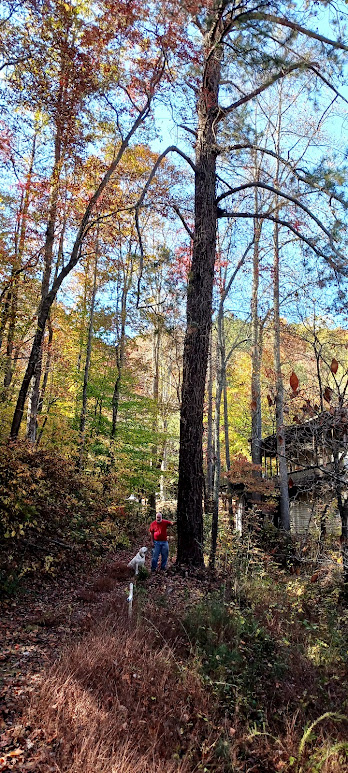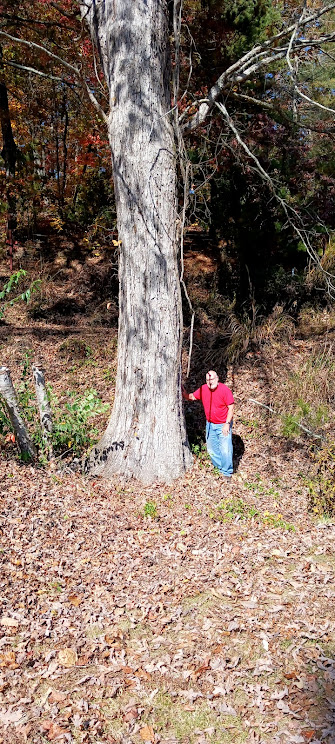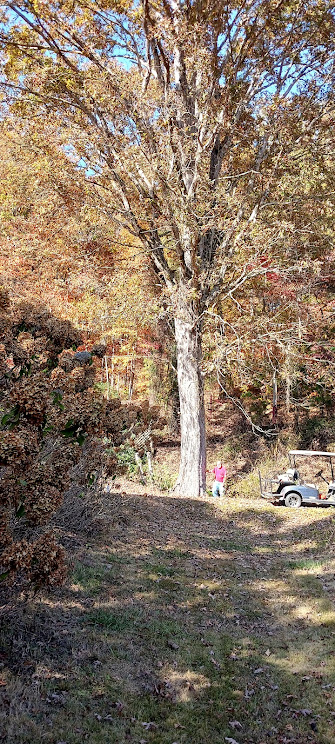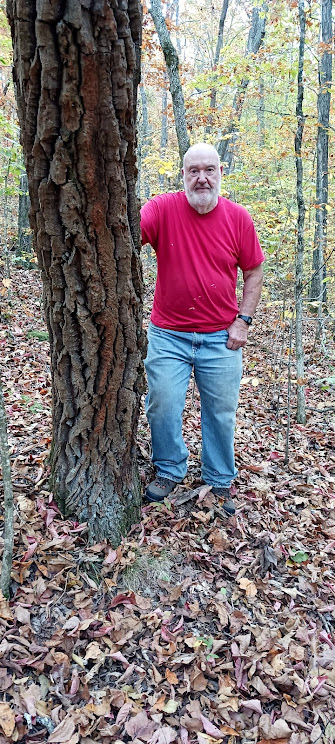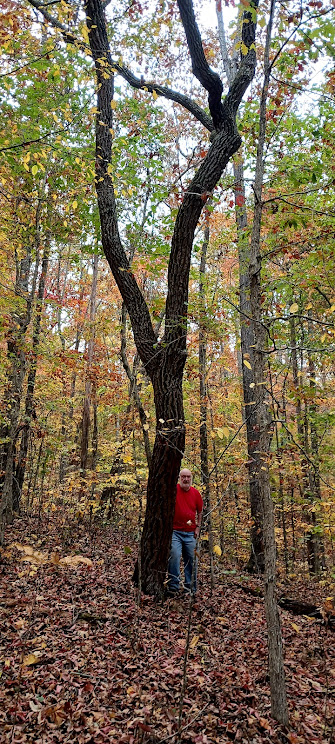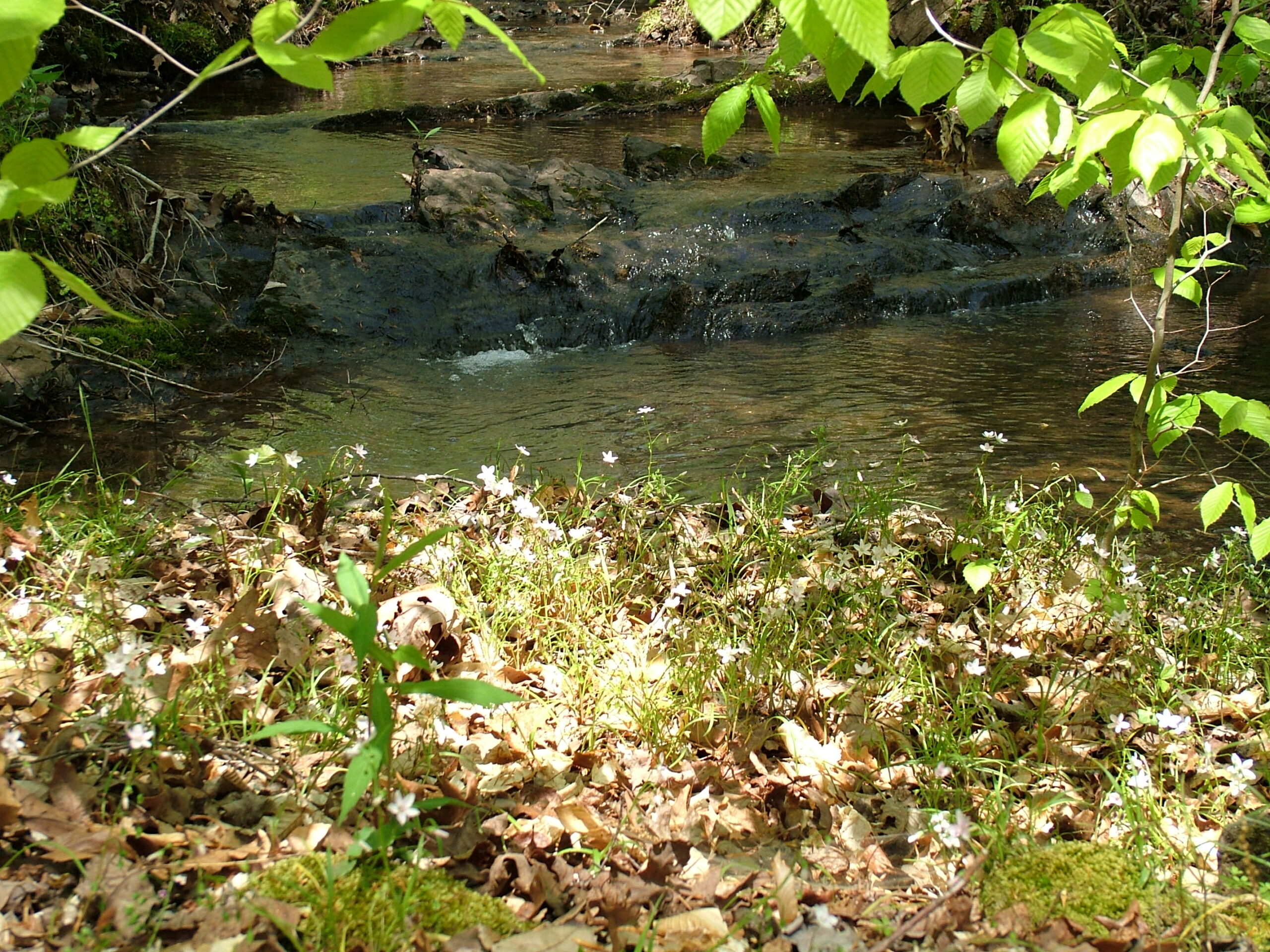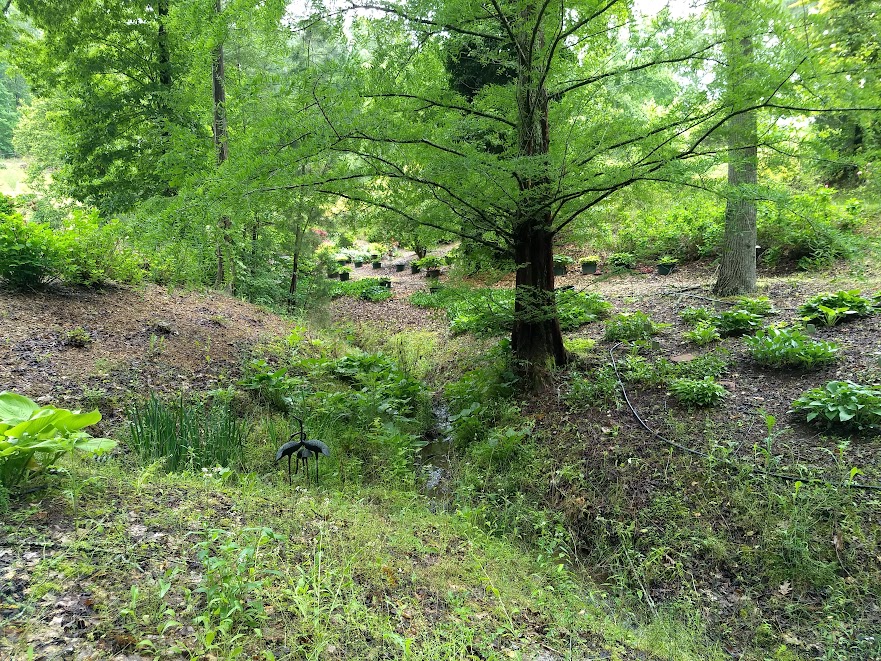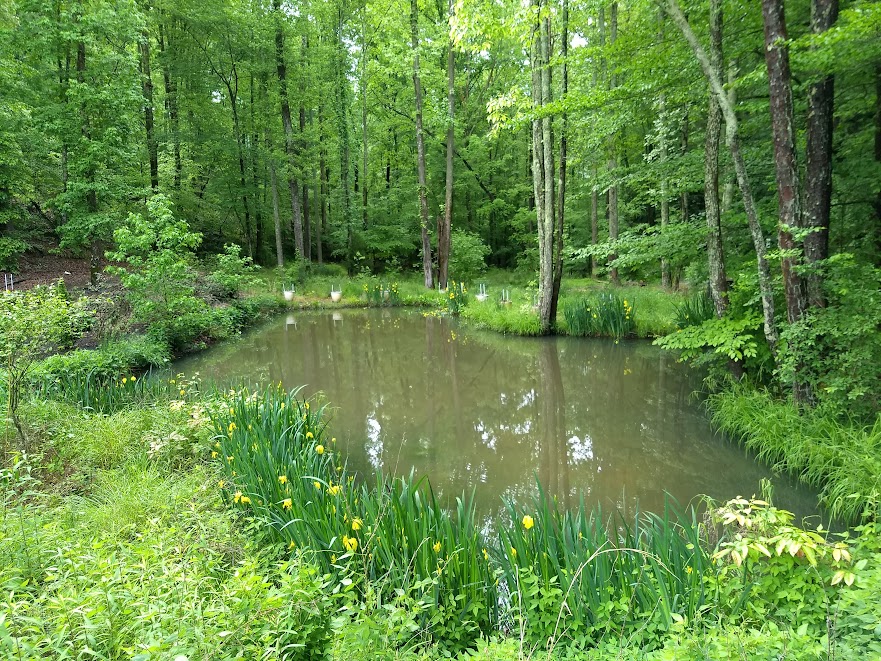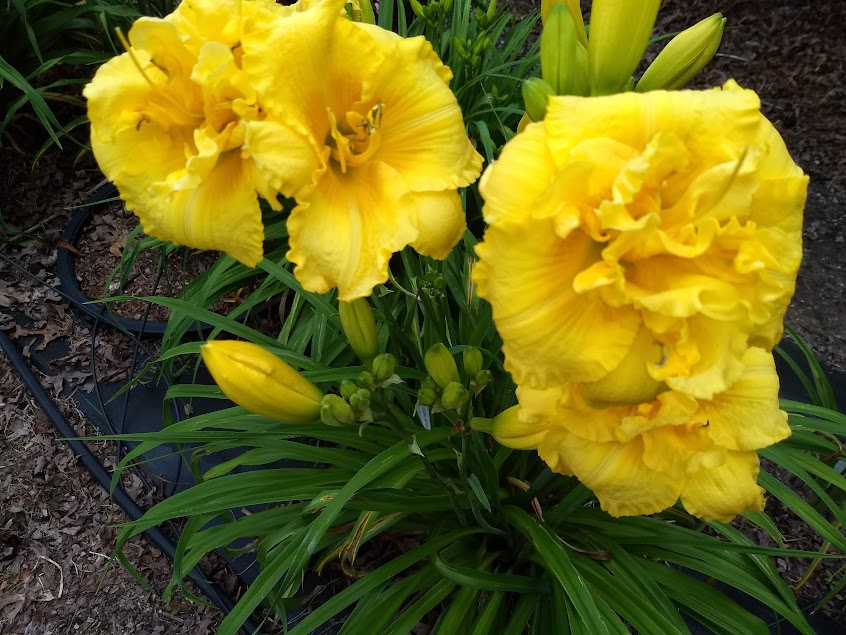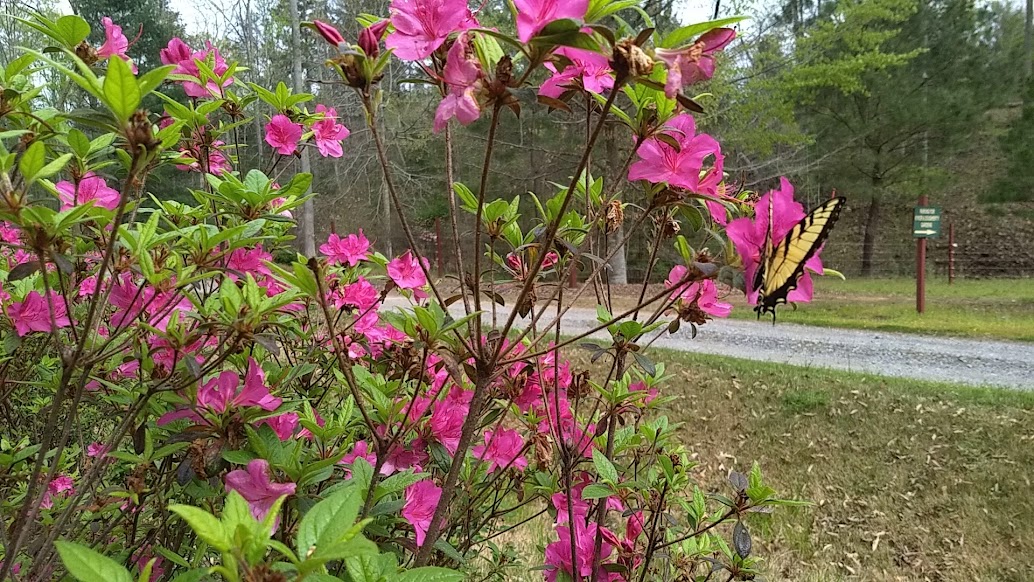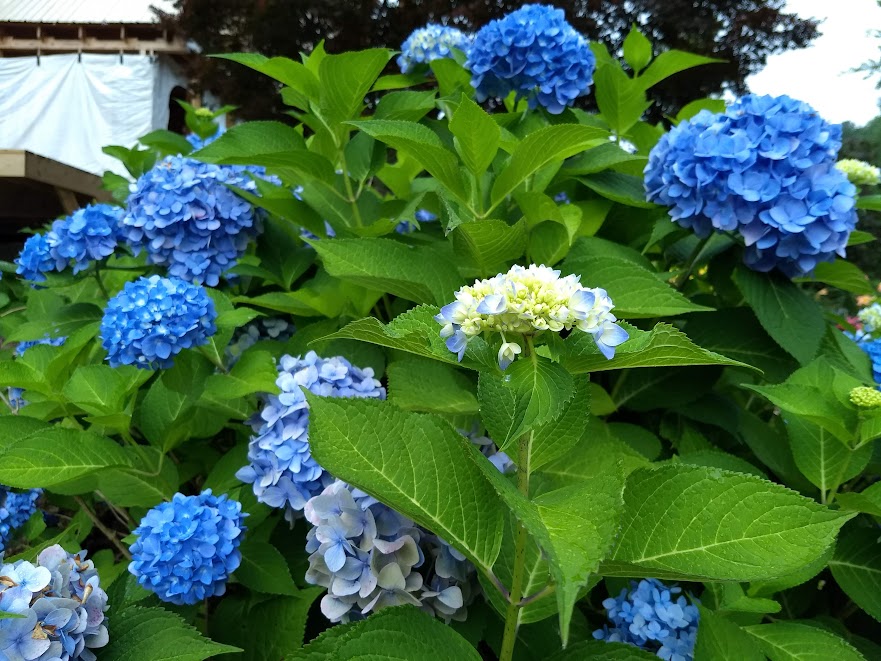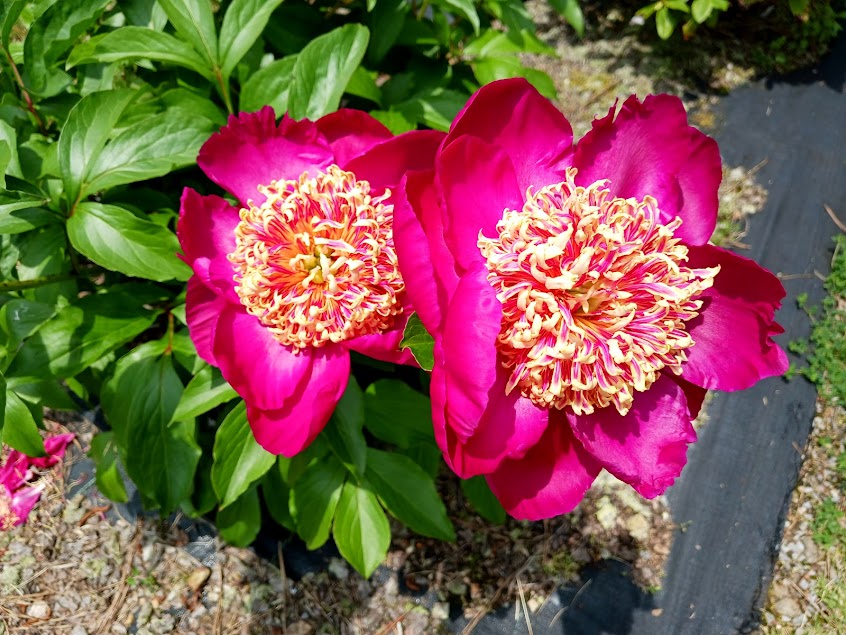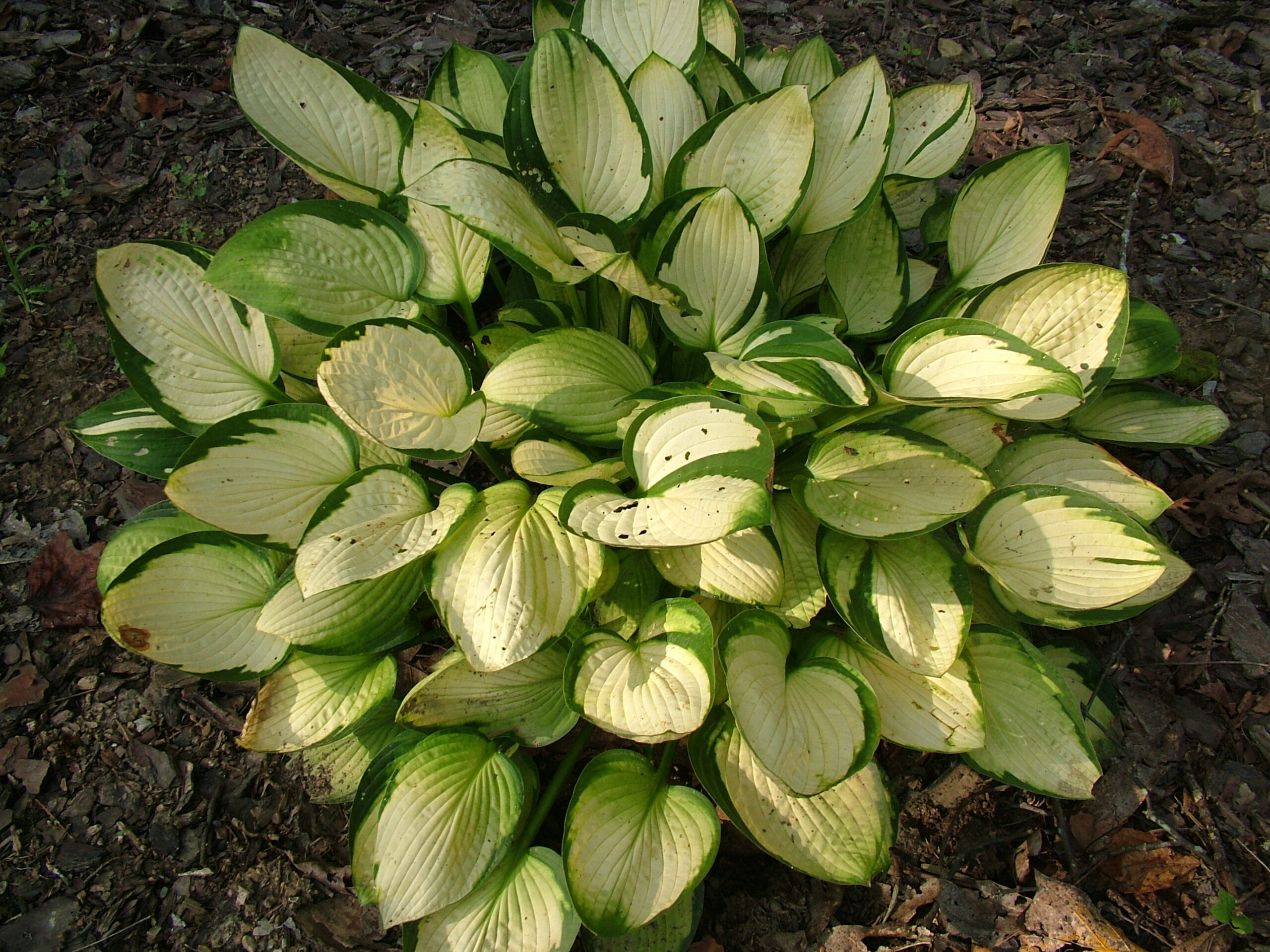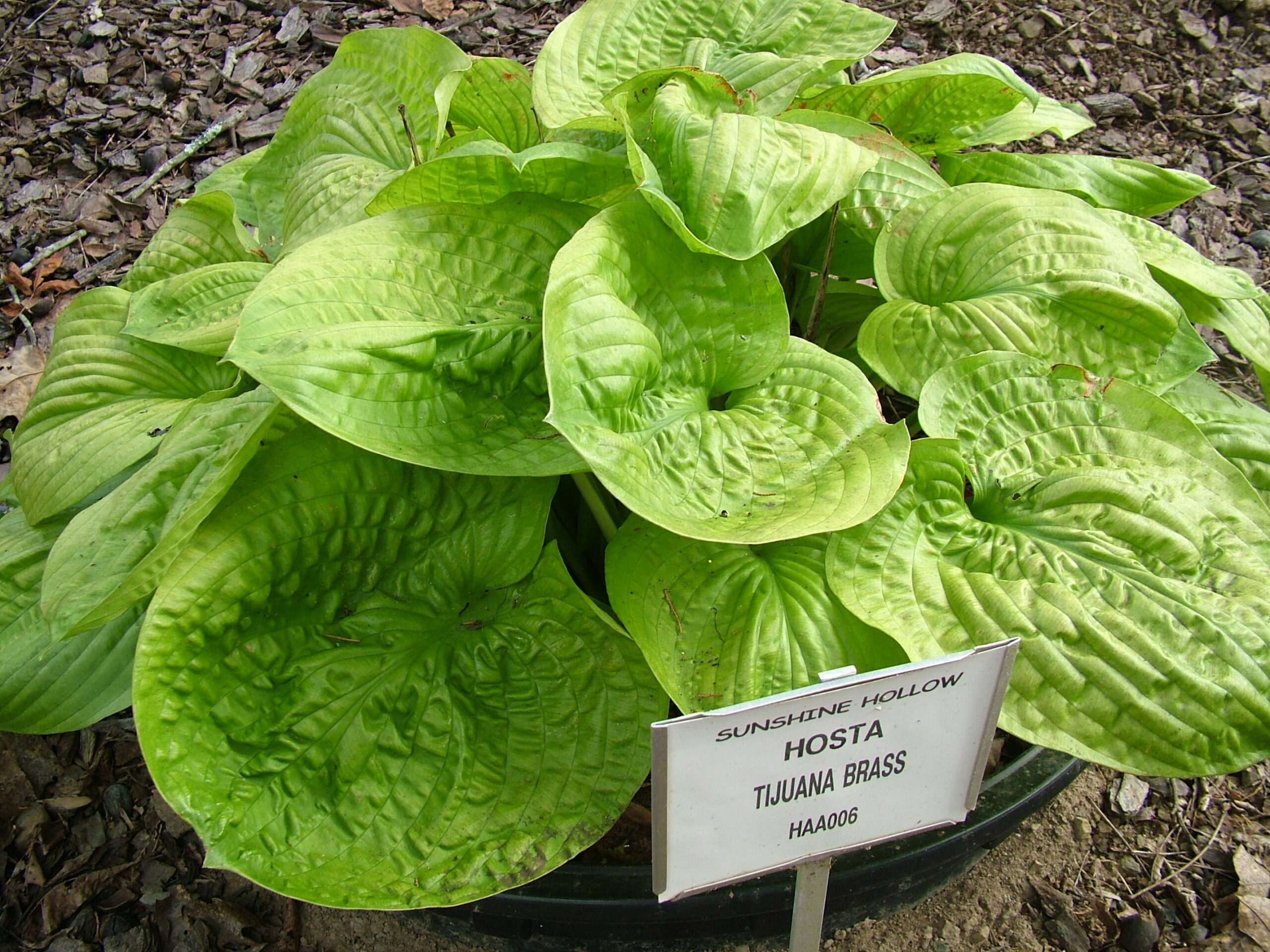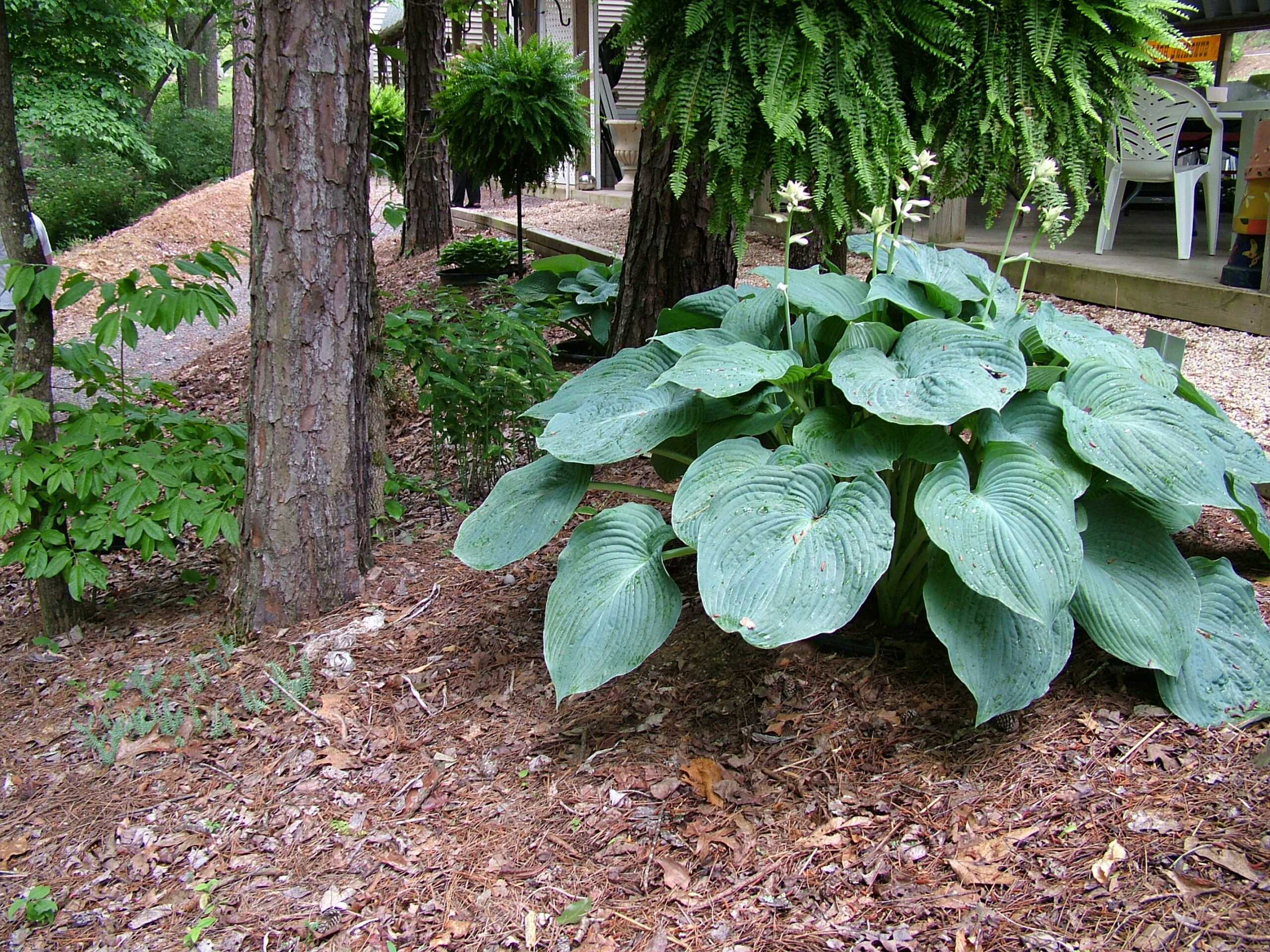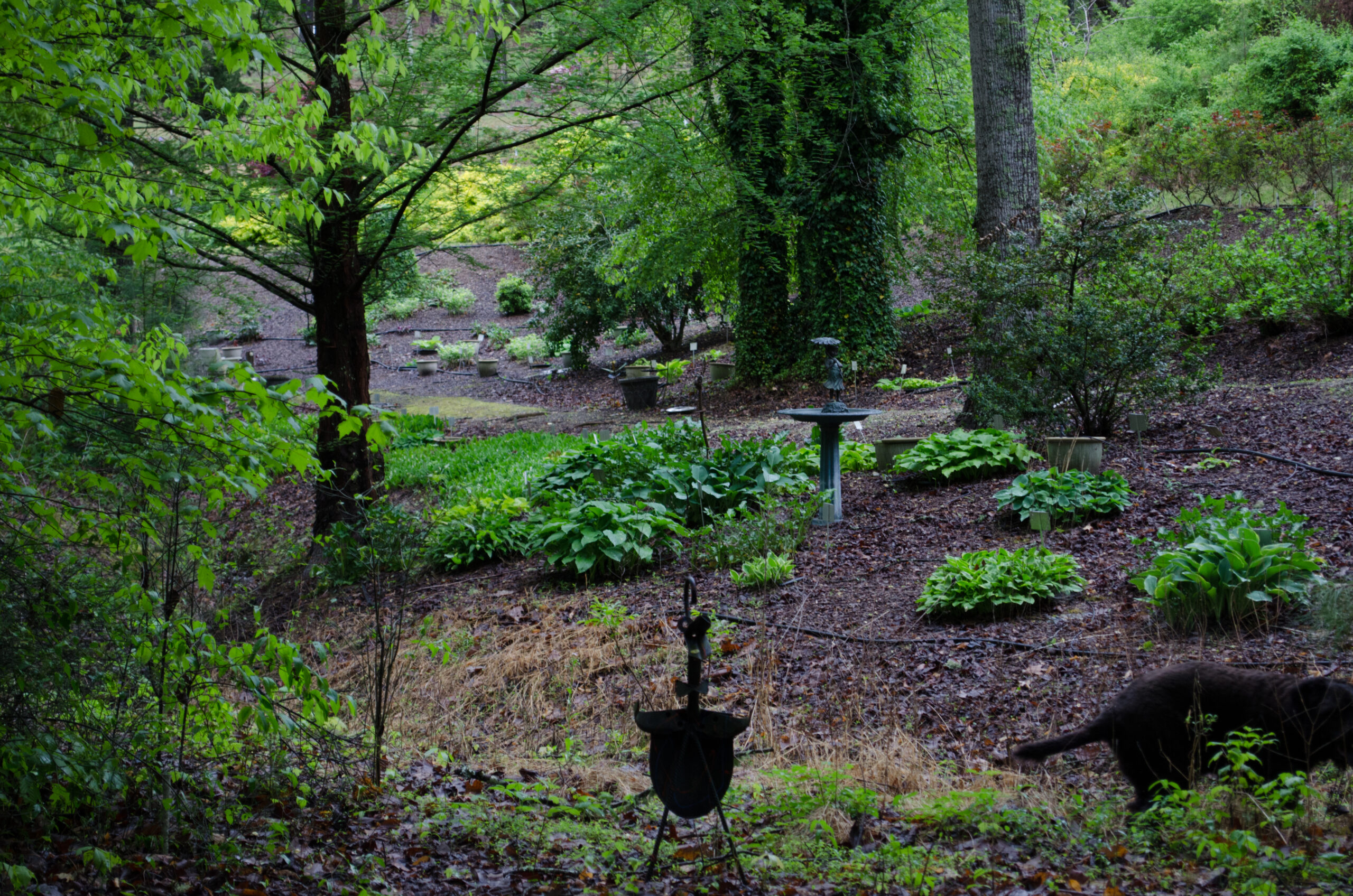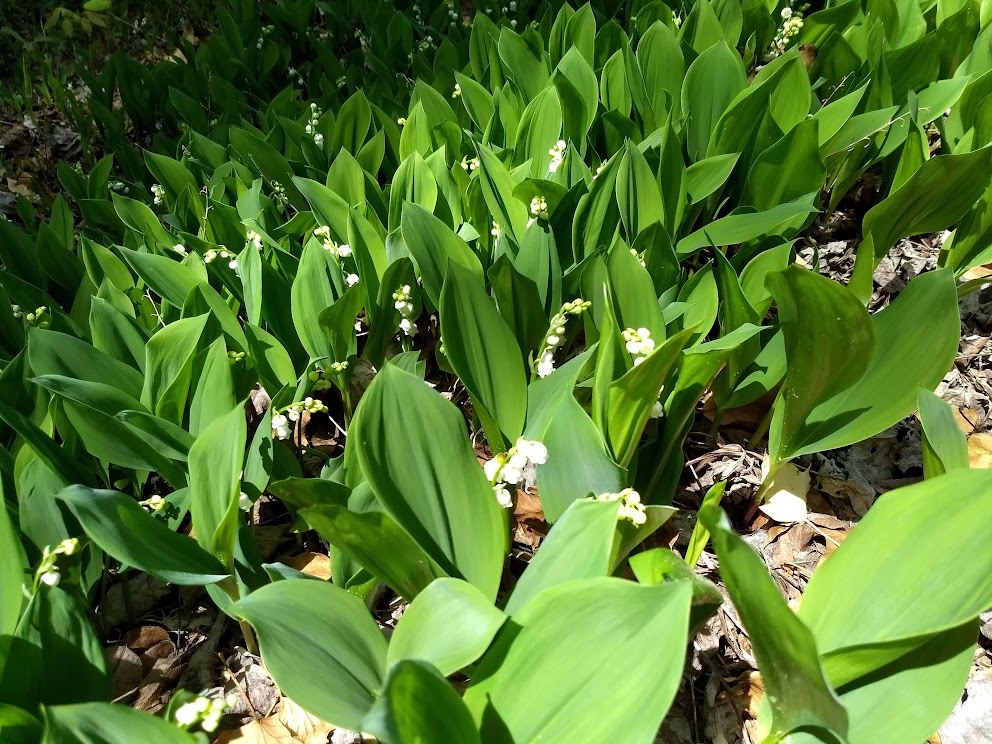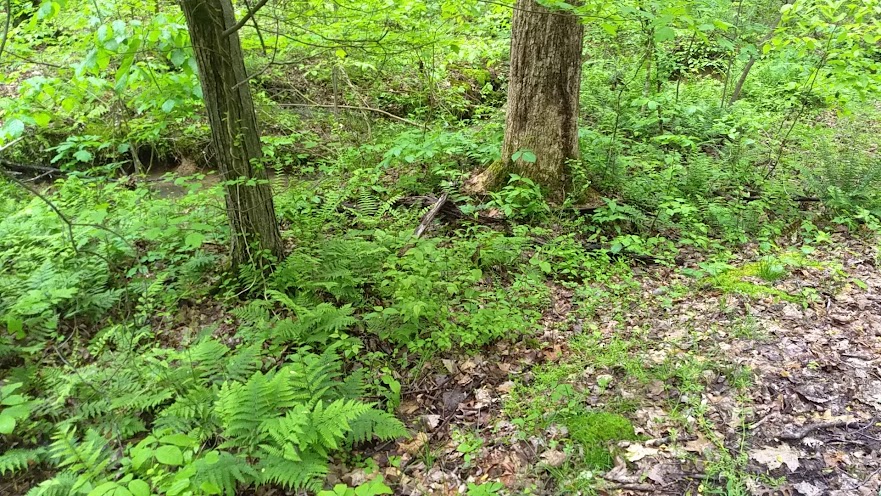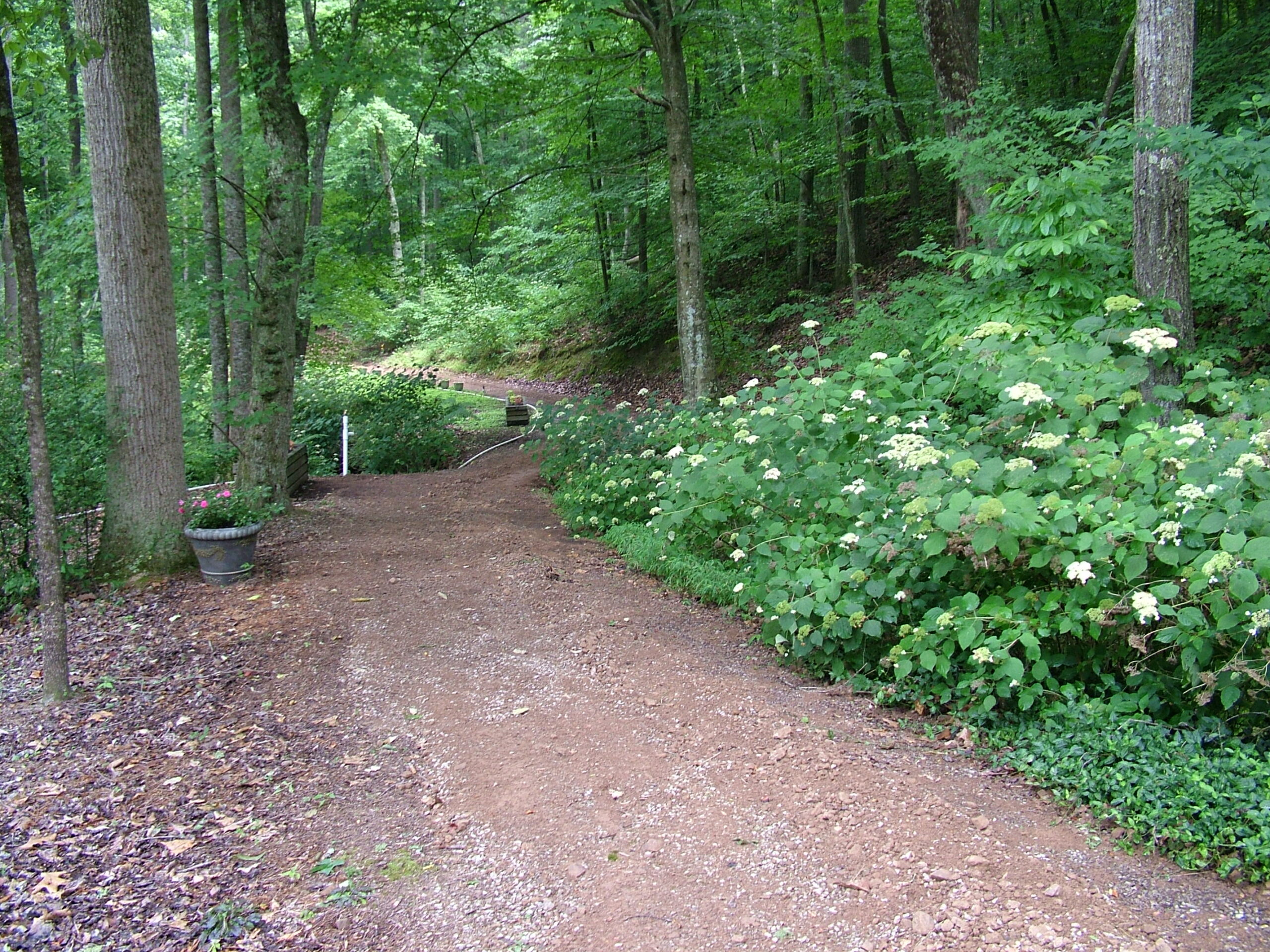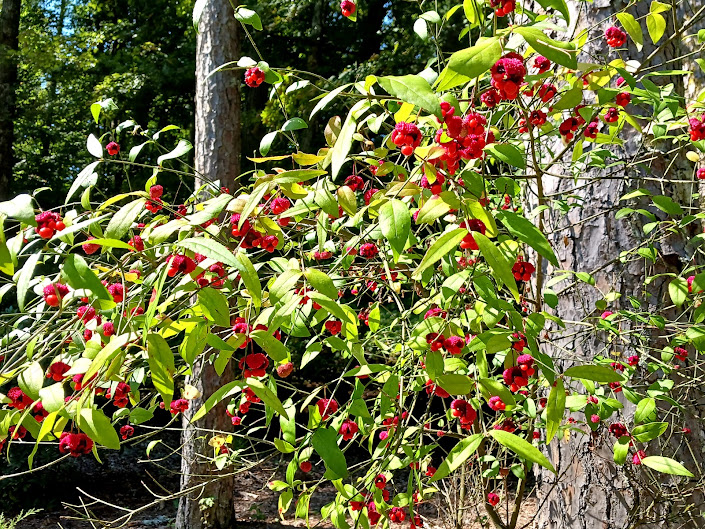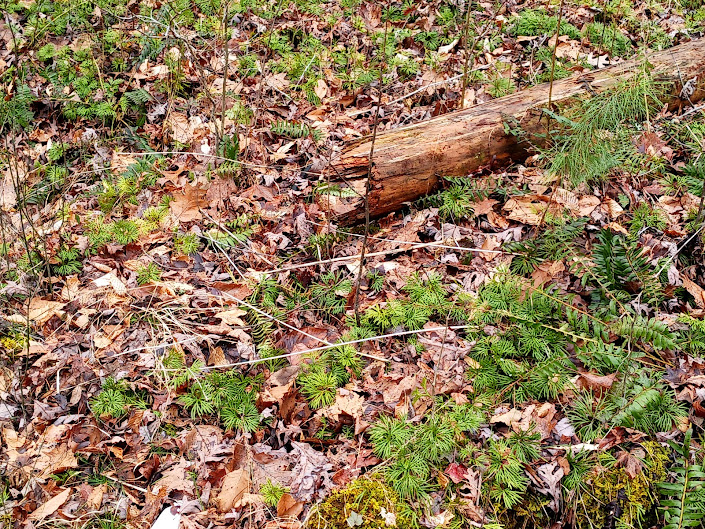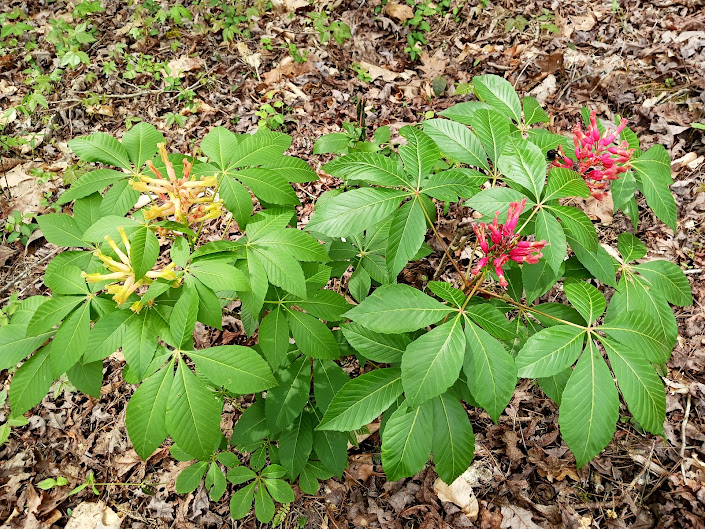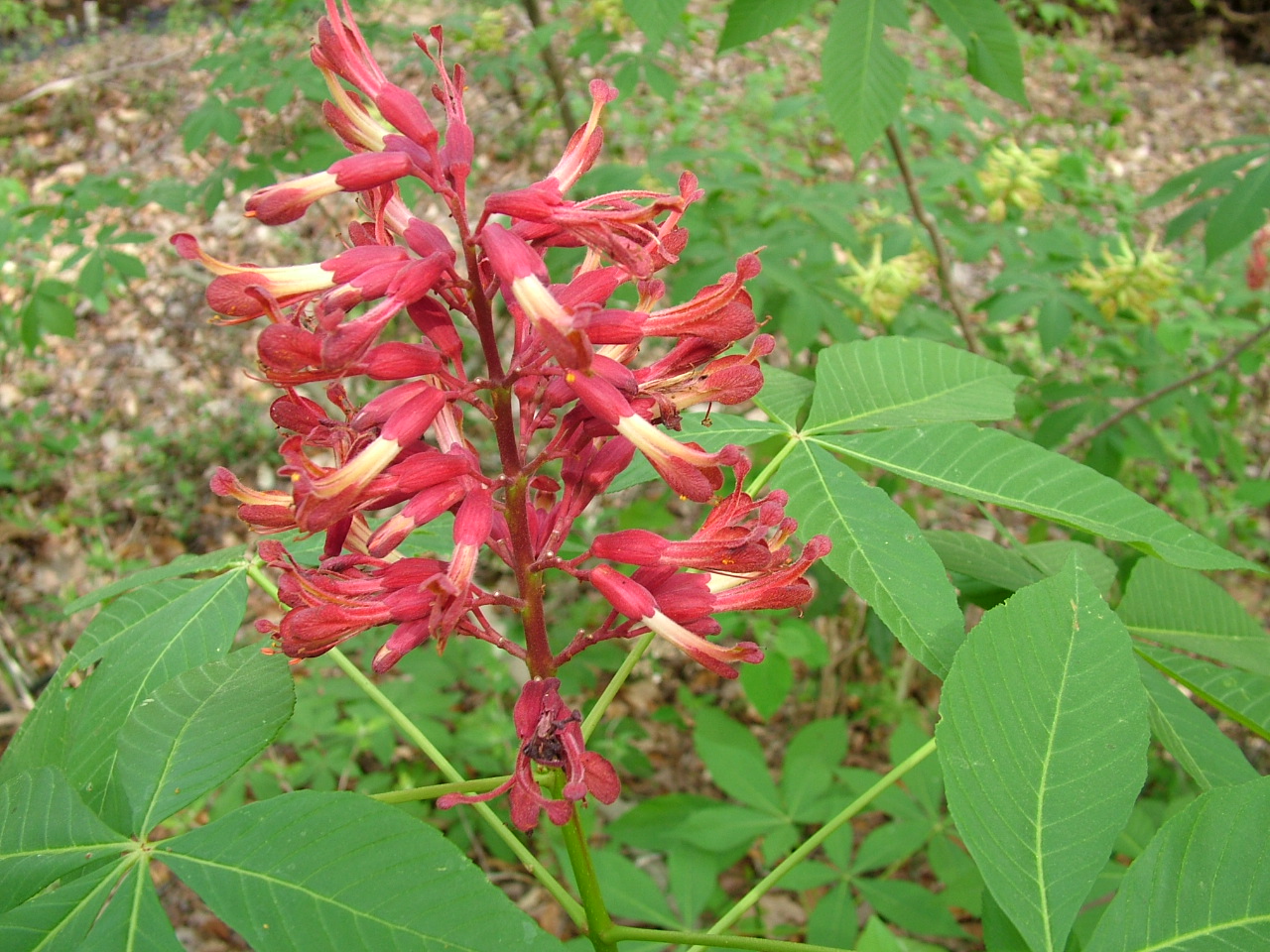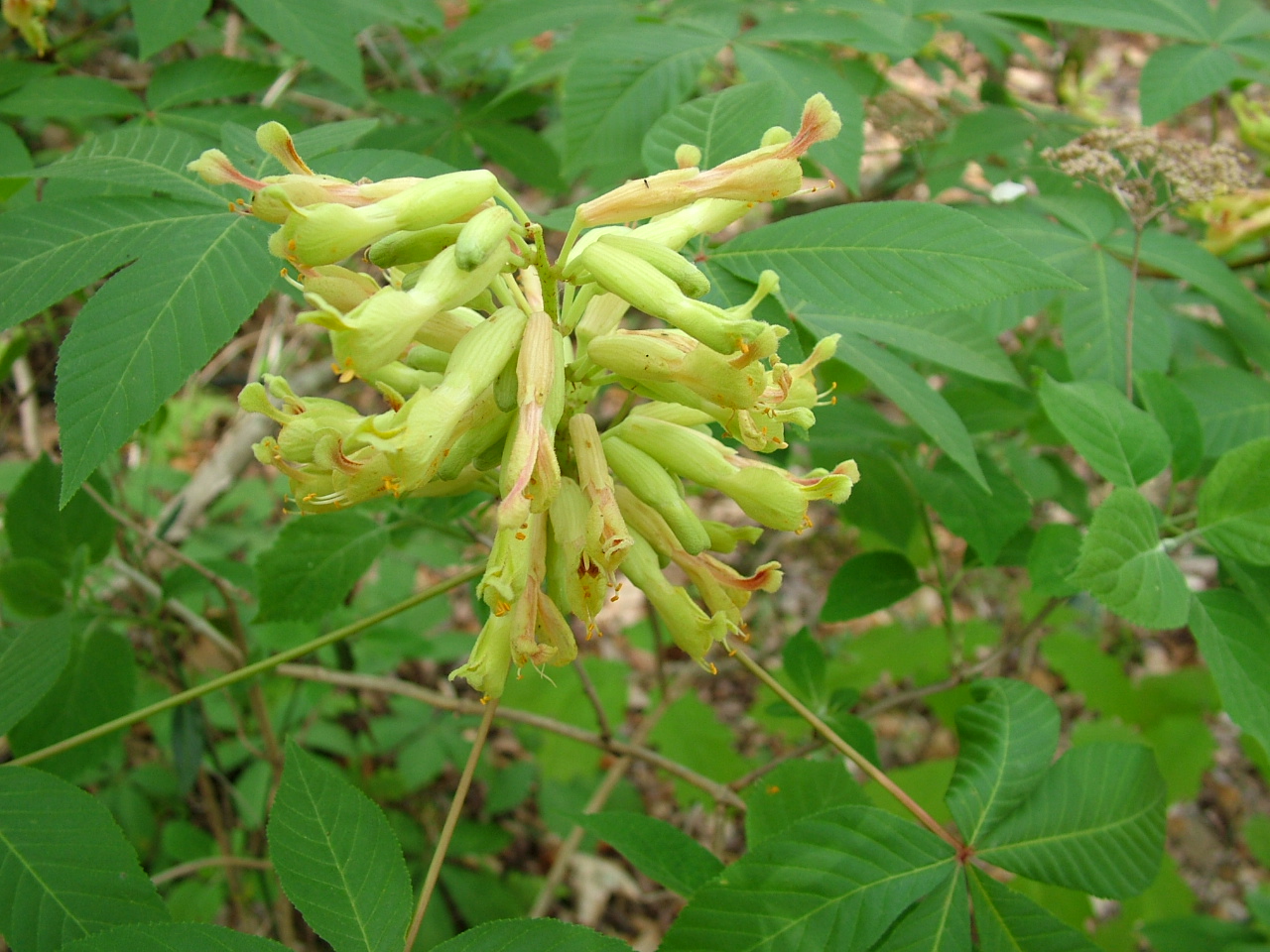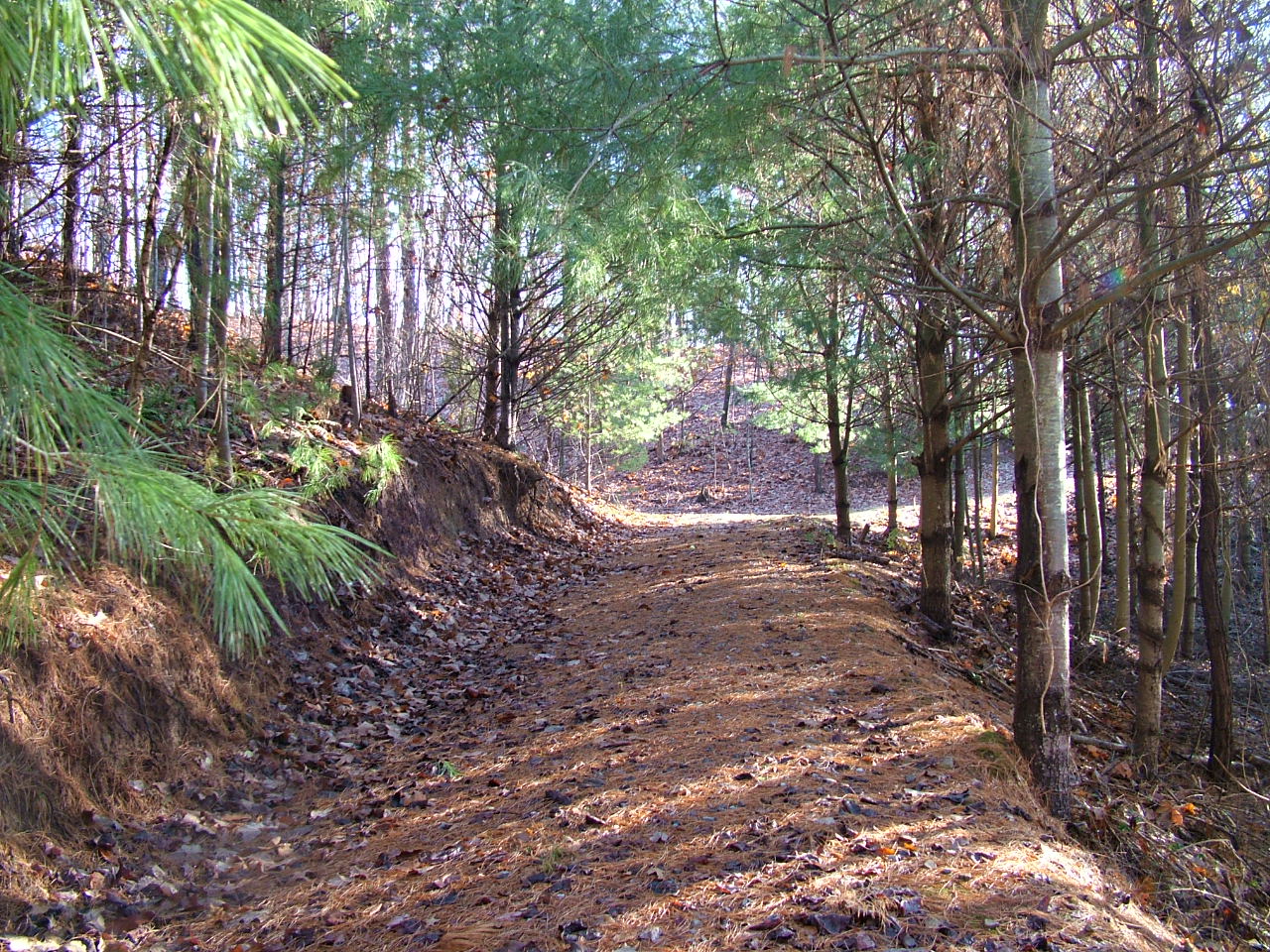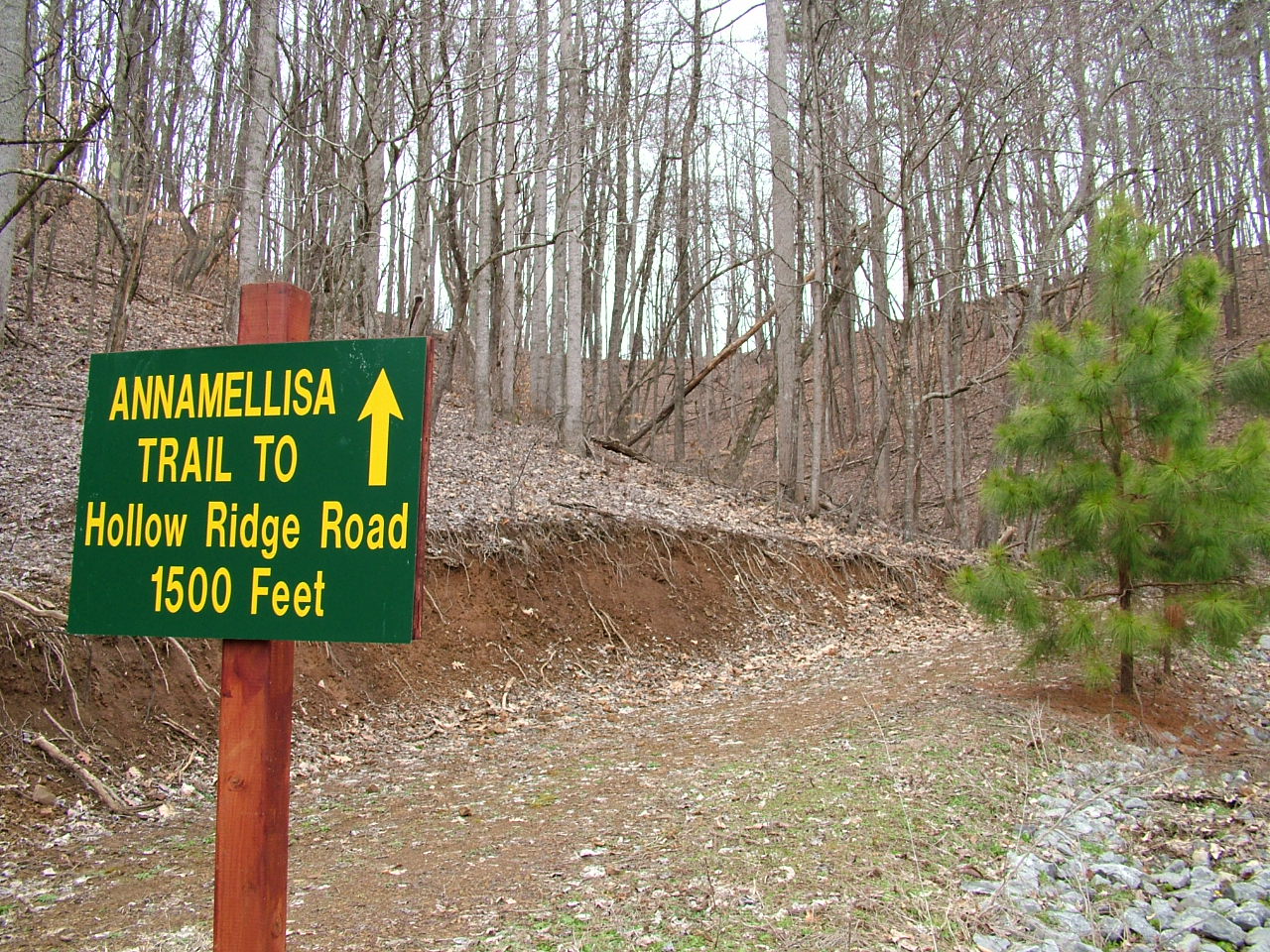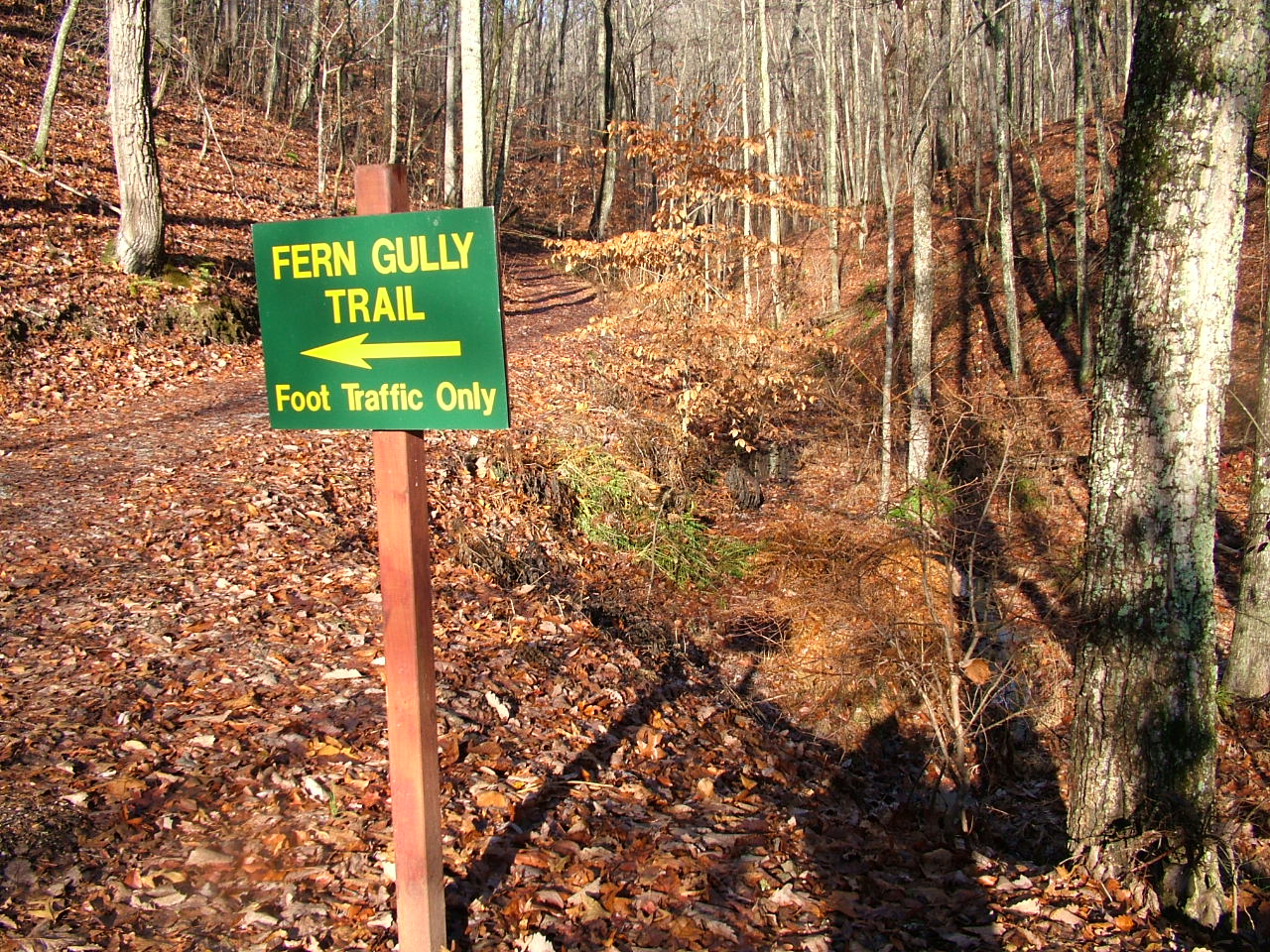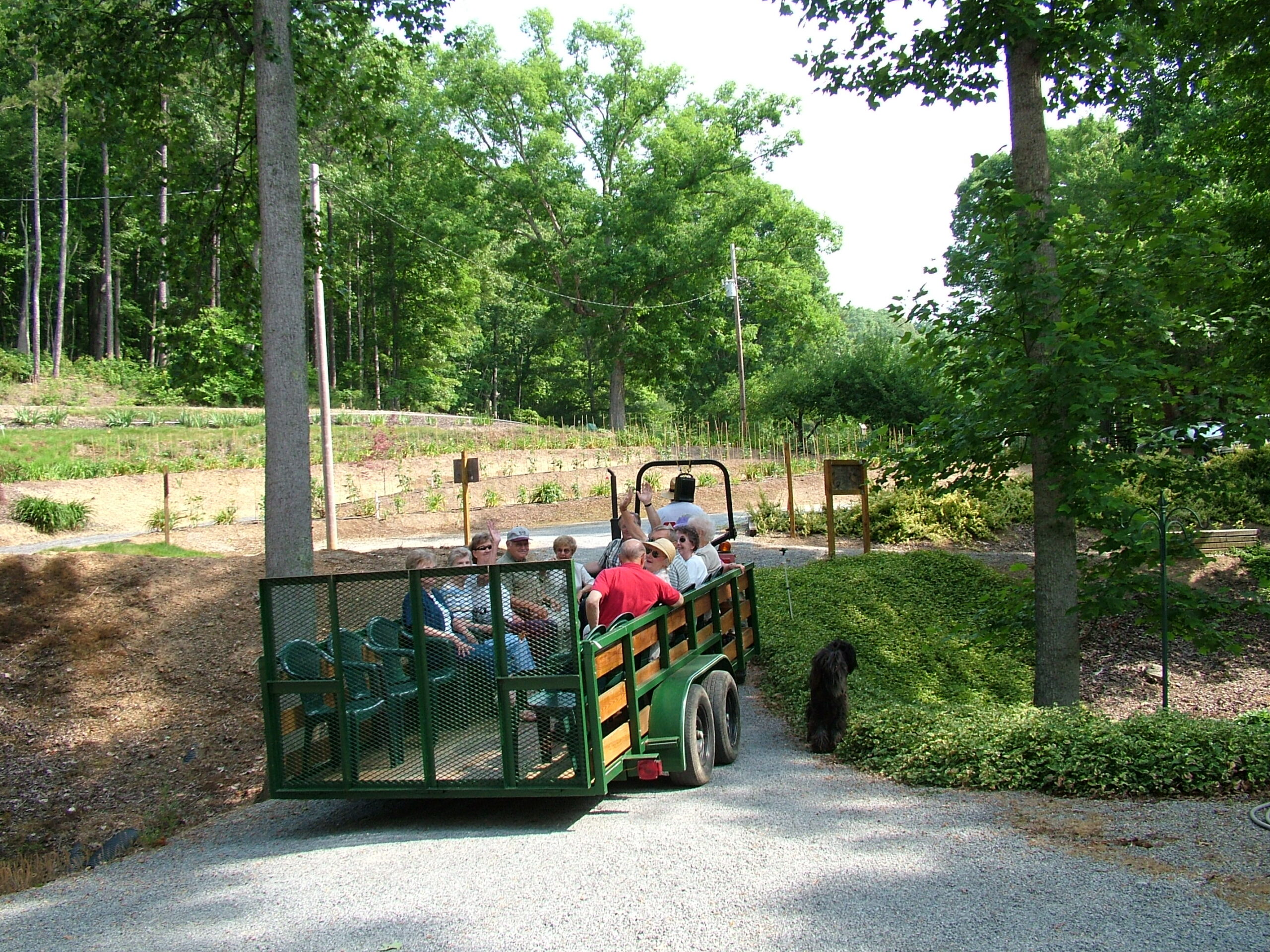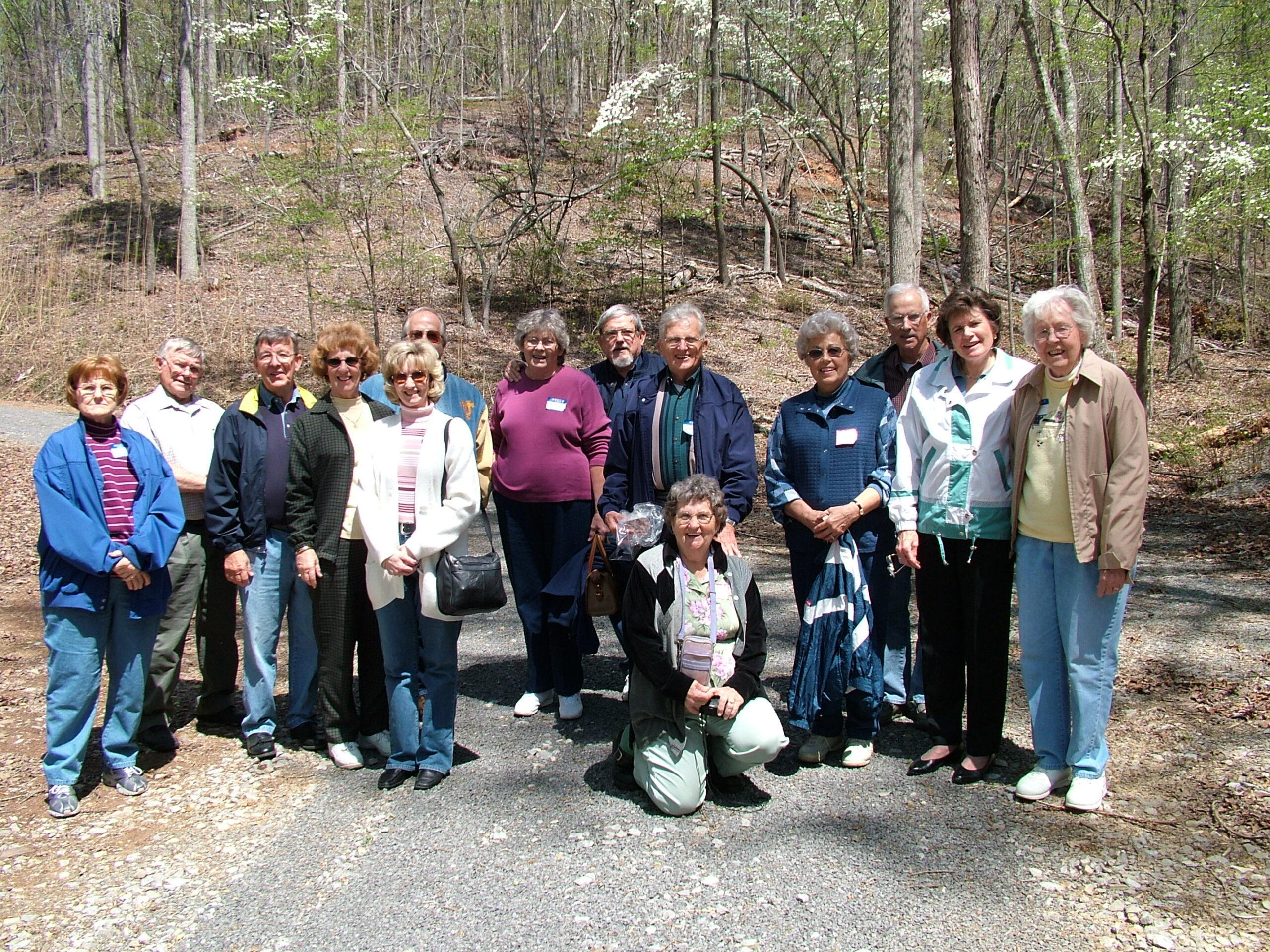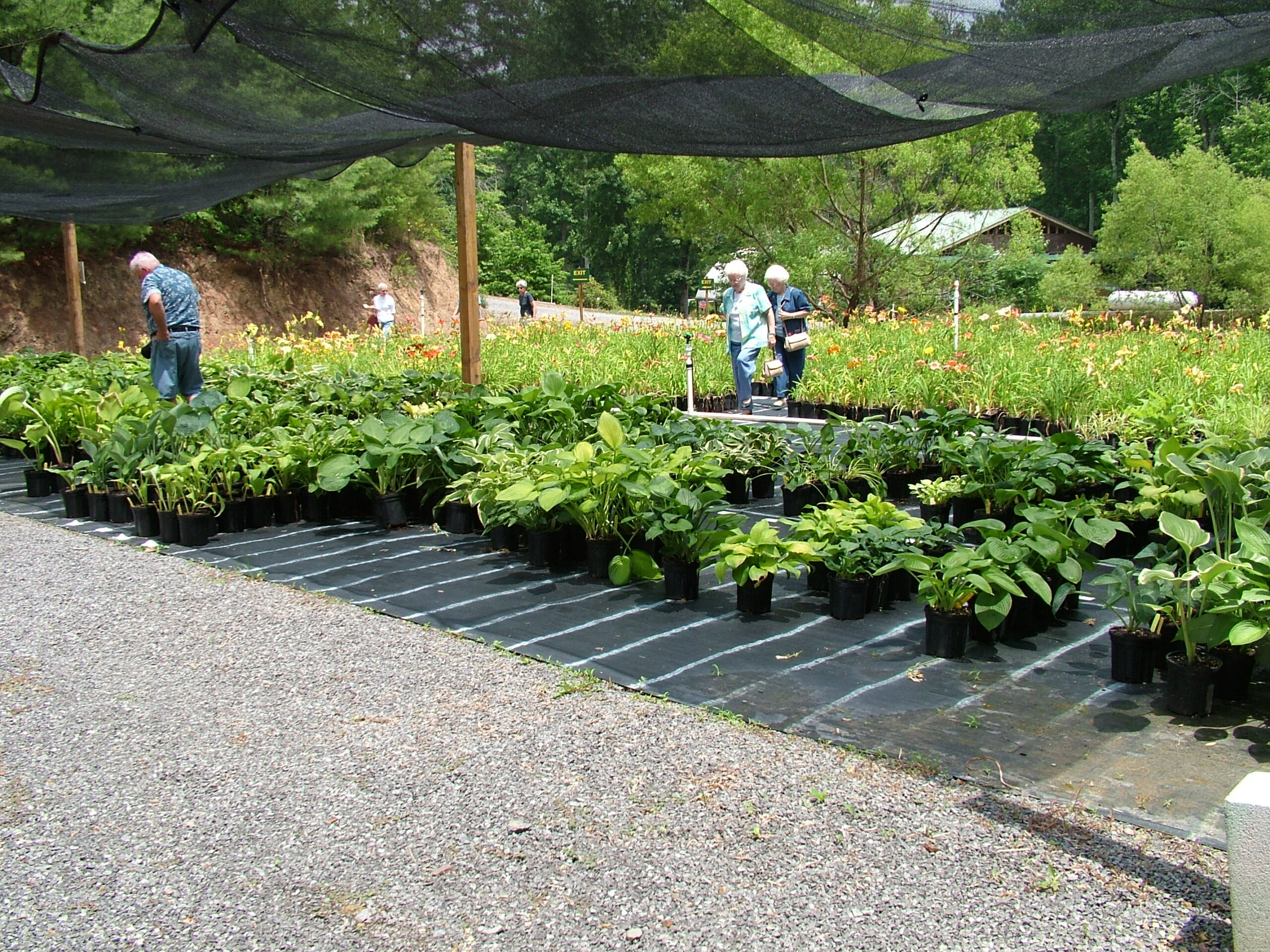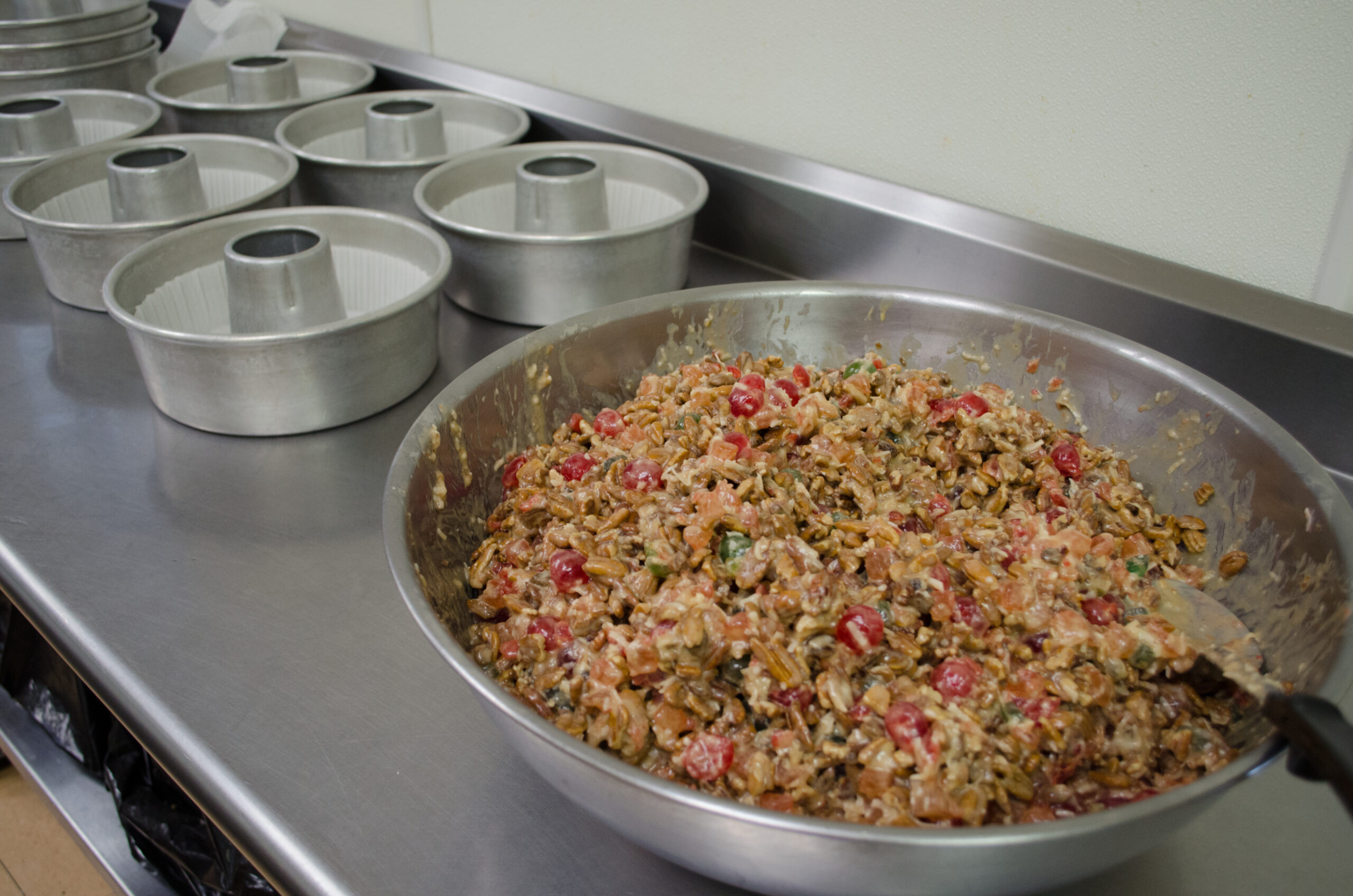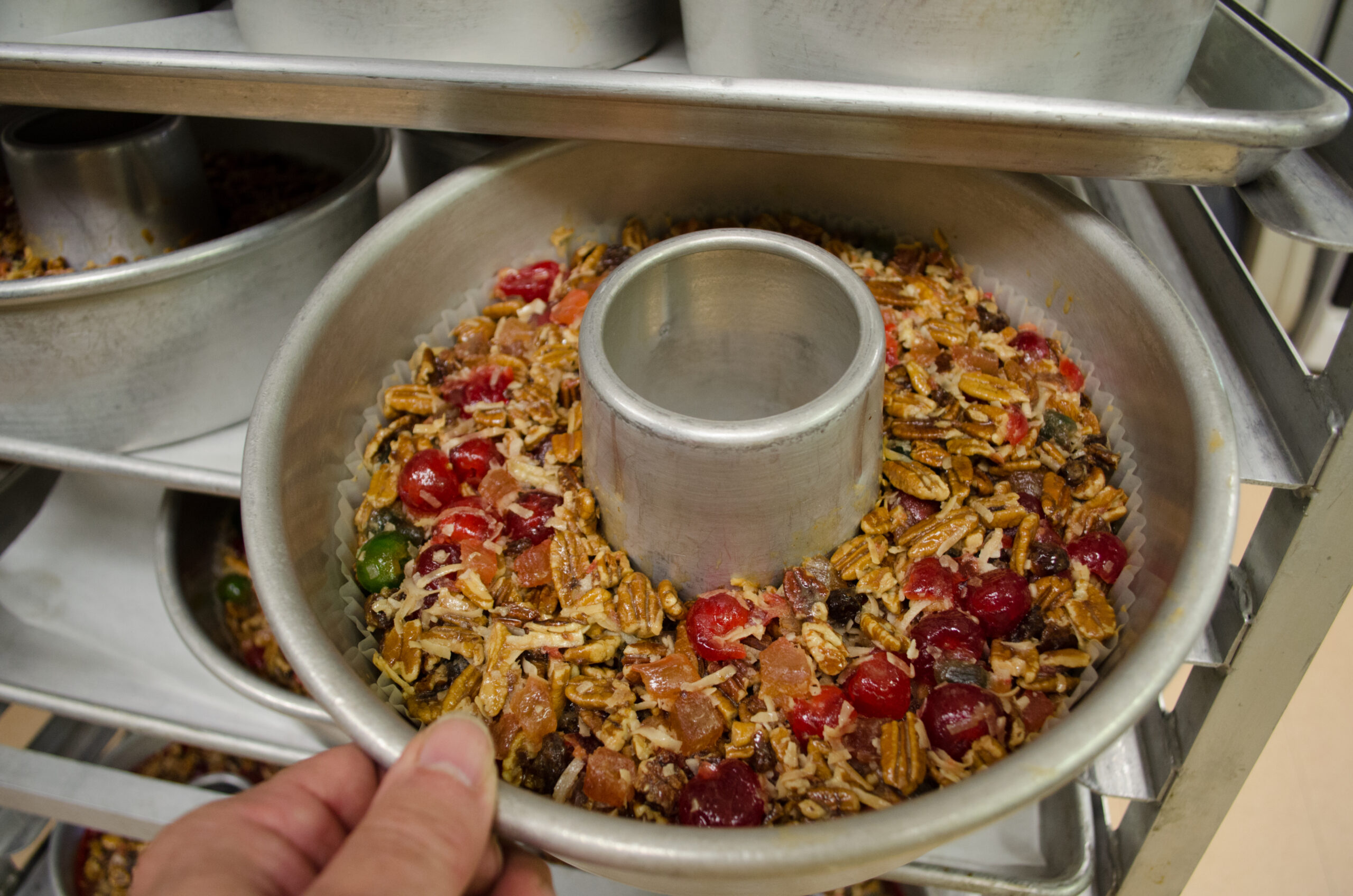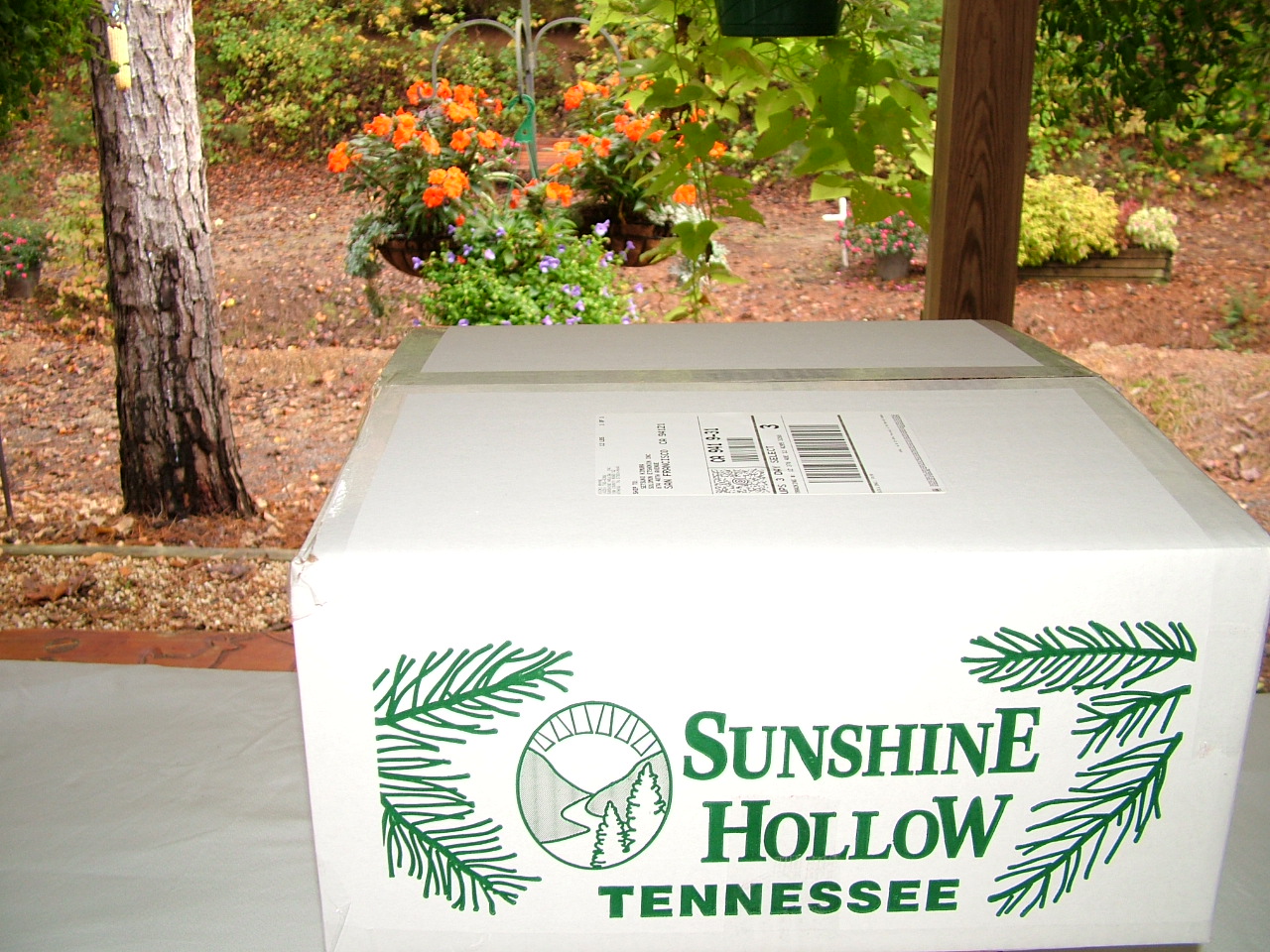A Natural Area and Gardens
Sunshine Hollow, nestled in the ridges of the Great Valley of the Tennessee region, lies centered between the Cumberland Plateau and the Appalachian Mountains. (Aerial View of Hollow)
This virtually hidden and unique hollow, with only a very narrow water outlet, was created by the Earth’s crust shifts and erosion over millions of years. The sandstone underlying the Hollow stands almost vertically, creating fissures for water to flow out in many places. Have you ever seen Alder growing on the side of a dry south-facing slope?
The Hollow faces generally east with the morning sun and the moon rising in its entrance. With all four sun aspects inside its hills, it offers a diverse palate of growing sites for many native plants. Moonshine Creek that leaves the Hollow flows through a drainage about fifty feet wide at the bottom. It flows between two steep slopes created by a cleft in the sandstone that forms the ridges of the Hollow. Upstream to the west, the Hollow widens out in several directions for about one-half mile or more to form a drainage of about one hundred acres.
This large bowl-shaped area with restricted access has captured many things that are rare in the area and allowed thousands of years of inbreeding between the different Azaleas in the Hollow.
Inside this Hollow and surrounding hills is a unique diversity of plants found in numbers that I have not seen elsewhere in my extensive travels in Tennessee. The most important and abundant are the several species of native Azaleas. Below is a partial range of colors of the Azaleas in the Hollow.
One of the most abundant Azaleas is the native Mountain Azalea (Rhododendron canescens), of which there are thousands scattered along the trails through the Hollow.
The Mountain Azalea has blooms that are very light to dark pink and has a lovely Honeysuckle-like fragrance thus the common name Bush Honeysuckle. But there are three other distinct, possibly unknown species. One of the unknown Azaleas is a pure white variety with no other markings. Some of the other white Azaleas have distinctive lemon markings on the upper petal of the bloom similar to either Rhododendron arborescens or Rhododendron alabamense as shown in a couple of the pictures below.
On some of the Whites everything is white, the petals are pure white and the stamens and pistils are also pure white with the receptacle or flower tube being a light pink or pure white. It may be a clone of Rhododendron alabamense. One of the others is what may be a unique variant of the Flame Azalea (Rhododendron calendulaceum) or a hybrid between two unknown Azaleas. The only place something similar has been found is on Gregory's Bald in the Great Smoky Mountains National Park. The last unique variety is a Cherry pink variety that has a distinct cherry midrib with lighter cherry and pink petals.
The pink and gold azalea has one petal of gold and the others of a blush pink polychrome. It is an incredibly beautiful Azalea and only a few plants are found in one spot on a north-facing hillside. The other Cherry pink azalea is also very unique and is only found in one spot in the Hollow on a south-facing hillside. I have also found others in the Hollow with some stripes or blushes on their petals.
Other unusual plants are Pink Lady Slippers (Cypripedium acaule), Yellow Trillium (Trillium luteum), Red Trillium (Trillium erectum), Dwarf Crested Iris (Iris cristata), True Solomon Seal (Polygonatum species), Skullcaps (Scutellaria ) and a dozen different Ferns plus many others native flowers and shrubs that are shown in the section on Flora below.
OUR HISTORY
The population of this area of Tennessee is predominantly English-Scotch-Irish who moved into the area before and after the removal of the Cherokee Indians in 1838. Due to the terrain and lack of good arable farmland, they had a hardscrabble life. The truth was that “Anything you could walk a mule on was farmed”. The Hollow is a perfect example of that. A few acres, that were gentle enough to walk a mule on, were farmed. Vegetables were grown and enough corn was grown to eat, and judging from two moonshine still sites I have found here, the rest was converted to a cash crop called “Moonshine”.
I believe the last cutting of timber was in the 1940's, possibly during World War Two. Not all trees were harvested such as the Hickories and Beeches and there also may be some areas of Virgin forest that were not cut due to the inaccessibility and steep terrain. The hollow was very inaccessible with no real road access. This was a time when crosscut saws and mule or horse logging was done and small sawmills were moved with the cutting of the timber. Most of the forest in the Hollow has not been cut in almost 80 years. Trees that were not harvested in the early 1900's such as Hickory and Beech and some other trees range in age from eighty to over three hundred years old. Some of the trees here were seedlings in the late 1600s and early 1700s when Europeans first came into the Great Valley.
In June of 1973, I came to look at this property in search of a place to live and to make a place for others to also come and enjoy. This lifetime of work has created two distinct areas: The first is an area of about thirty acres that has been developed as a beautiful low-maintenance Garden containing hundreds of perennials, shrubs, and over one hundred large pots containing annuals that bloom from Spring to Fall. The gardens feature both sun and shade areas with hillside terracing and trails that are centered around a three-acre lake. The main sun gardens tie to adjacent woodland nature trails along the creeks.
Adjacent areas are the Fred Lee Rhyne Nature Trail which follows Moonshine Creek through the Hollow where many native plants abound, the Margaret Rhyne Shade Garden featuring Hosta and other shade-loving plants, the George wetland area where wetland area plants are found, and the Fern Gully trail where hundreds of native ferns are abundant.
The Sun Gardens feature sun-loving daylilies, Iris, Rhododendrons, Hybrid Azaleas, Hydrangeas, Peonies, Rose of Sharon, and many other plants.
The annuals displayed in the Sun Gardens feature varieties that have been tested over the last forty years that perform beautifully throughout the full Spring to Fall season. The Shade Gardens feature shade-loving plants such as Hosta, Lily of the Valley, Ferns, Native Ashy Hydrangea, Hearts a Burstin', Ground Cedar, and Painted Buckeye.
The other area is a one hundred fifty acre natural area surrounding the developed area and only accessible by several miles of trails that have been constructed through the hillsides. Both the natural areas and developed areas contains over one hundred identified wildflowers plus giant white oaks, red oaks, hickories, yellow pine and tulip poplars many of which are over one hundred feet tall. Twelve different trails traverse the Hollow, the longest being two and one half miles.
Sunshine Hollow has been visited by thousands of guests through these 50 years. Some come to visit the Gardens and natural areas, or to buy Daylilies and Hosta, or to buy Pecan Fruitcake that we have been making for over 55 years.
The Hollow has always been a work in progress and will continue to be in the future. A lifetime of work has created a place that is within a visitor reach of several million and only needs a visitor center to be used by Tennesseans and other guests.
Now, the original dream continues, “To make this a special place for more Tennesseans and others to enjoy”.



